HOME / BLOG / Travel Resources Traveling With Pets To Canada From The U.S. – Tips For Crossing The Border

Traveling With Pets To Canada From The U.S. – Tips For Crossing The Border
- By Amy at GoPetFriendly.com
- January 23, 2023
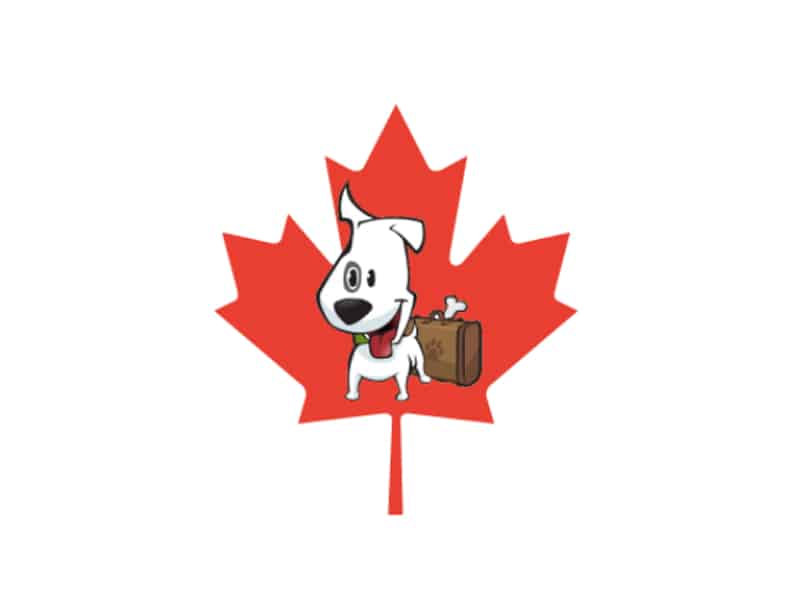
Traveling with your pets from the United States to Canada is easy! Learn everything you’ll need to know for a pet friendly road trip across the border.
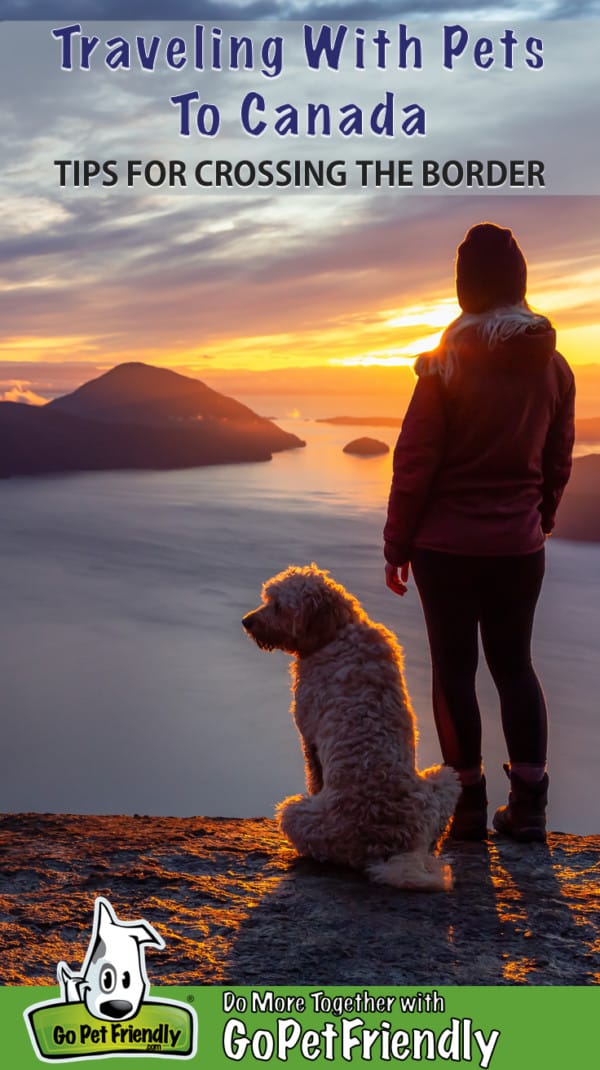
The idea of traveling with your pets to Canada might make you nervous. But there’s really no need to worry! We’ve traveled across the border with our dogs many times over the years, and we’re happy to share the tricks we’ve learned.
Traveling To Canada With Pets For Commercial Reasons
Please note that this article is for people traveling with their pets for personal reasons, like a vacation or to visit friends and family. If your trip to Canada is for pet breeding, sale, or adoption purposes, refer to the rules regarding the commercial transportation of animals .
If you’re planning to travel to or through Ontario with a bully breed , please pay special attention to the “Breed Specific Legislation” section of this post .
Documents People Need To Travel Between The U.S. And Canada By Car
Most U.S. citizens can visit Canada for up to six months, as long as the right paperwork is presented at the border. When entering Canada or returning the the U.S., all travelers must provide acceptable identification and proof of citizenship. A passport is recommended because it proves both citizenship and identification.
Those who meet certain requirements can apply for Trusted Traveler Programs. Acceptance into these programs allows members to use expedited lanes at the U.S. airports and when crossing international borders. In addition, these additional forms of identification may also be acceptable:
- U.S. Passport Cards
- Enhanced Driver’s Licenses
- Trusted Traveler Cards (Global Entry*, NEXUS, SENTRI, or FAST)
- Military Identification Cards (for members of the U.S. armed forces on official orders)
- U.S. Merchant Mariner Document (for U.S. citizens on official maritime business)
Those traveling for work, school, or who are planning to move permanently will likely need a Canadian visa .
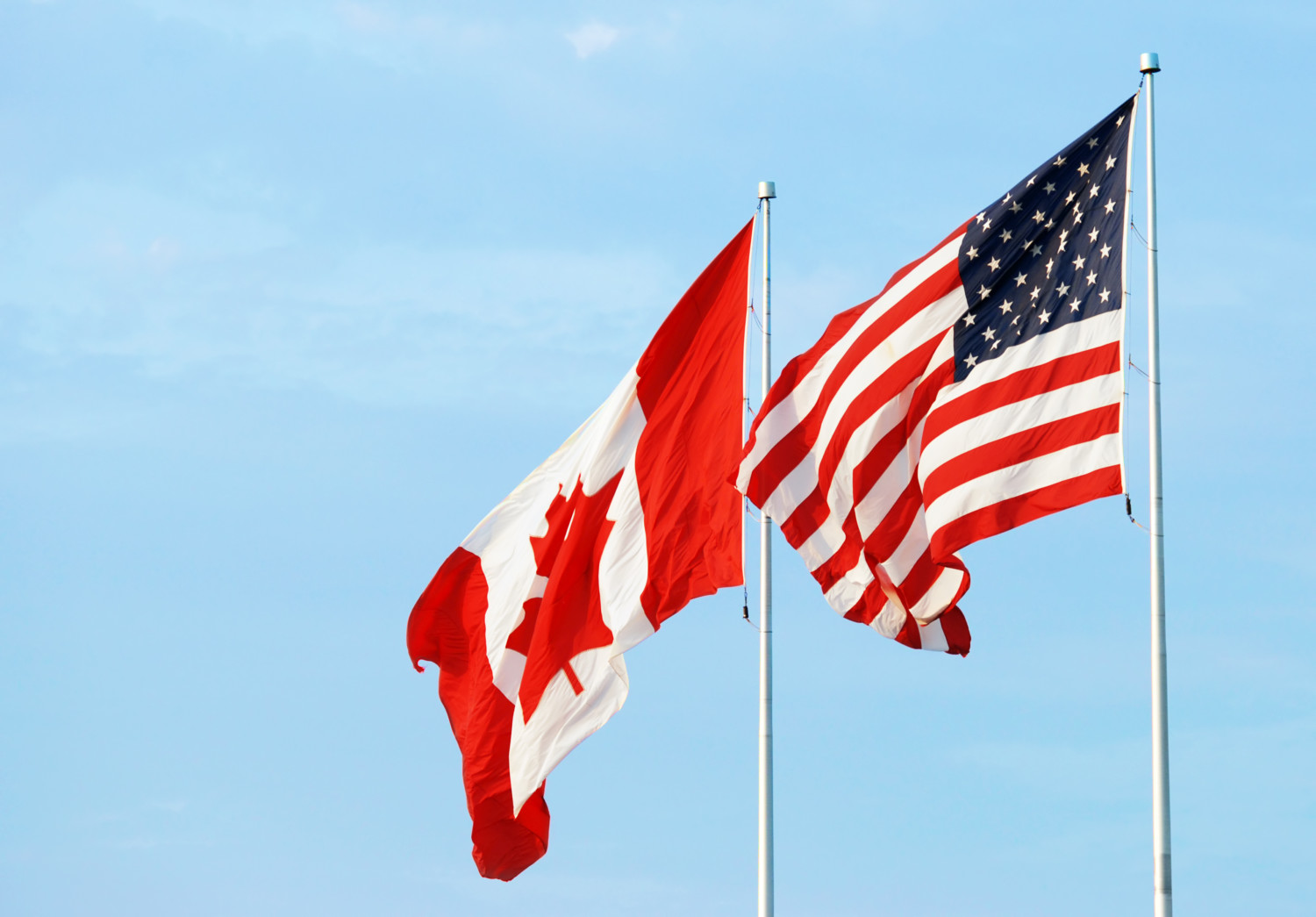
Traveling With Children
All minors entering Canada and returning to the U.S. must present evidence of citizenship, such as a passport or passport card at the border. Children younger than 16 who are traveling with both parents by land (not flying) can use their government-issued birth certificate as identification.
If you’re traveling with a child for whom you share custody, or you’re not the child’s parent or legal guardian, additional documents will be needed. You can learn more about those requirements on the US Customs and Border Protection and Canada Border Services Agency websites.
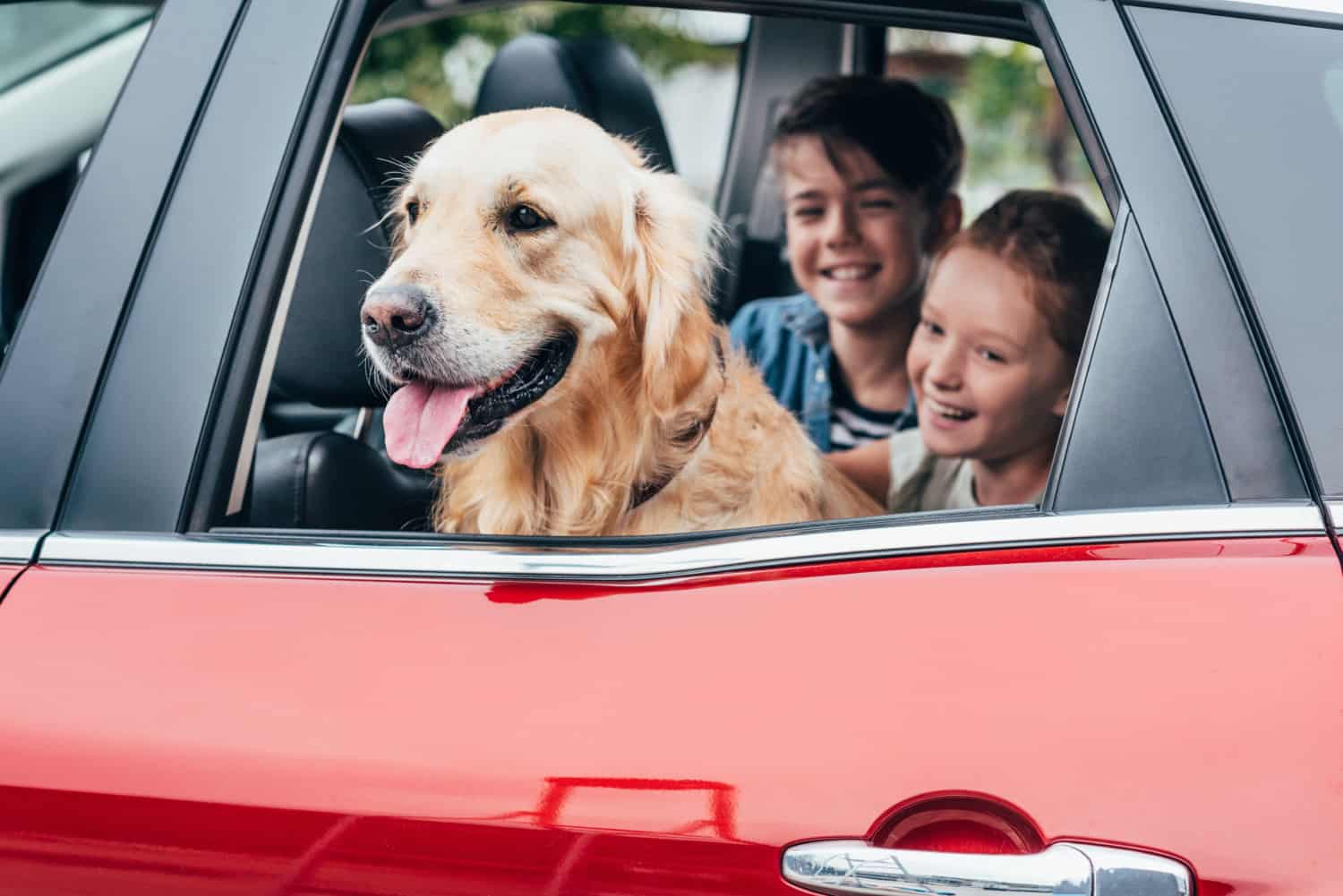
Pet Friendly Hotels In Canada
If you’ll be spending the night in Canada, you’ll also need to find a great pet friendly hotel ! Canada has many hotels that welcome pets, and it’s easy to find the perfect accommodations by searching online.

Documents Needed When Traveling With Dogs And Cats To Canada
There is no limit on the number of pets that can travel with you to Canada, as long as they are your personal pets. Before heading to the border with an animal, make sure you understand the Canadian import and travel requirements.
The Canadian Food Inspection Agency sets the policies for traveling with your pets to Canada. Their officers inspect and can refuse entry , confiscate, or detain an animal if:
- it is undeclared, including family pets
- you do not have the necessary permits/certificates
- it is suspected of being sick or infected with a pest or disease
- the animal is transported in a non-humane way and not kept safe from harm and injury
Proof Of Rabies Vaccination
If you’re traveling to Canada from the United States, Mexico, or any other country not considered rabies-free with your cat or dog that is at least three months old, you’ll need a valid rabies vaccination certificate. For cats and dogs younger than three months, proof of age must be provided upon request.
The rabies vaccination certificate must meet these requirements:
- be legibly written in English or French
- have the name and signature of the licensed veterinarian that issued the certificate and the date it was signed
- identify the animal by age, breed, sex, color/markings, weight, and microchip/tattoo number, if applicable
- state that the animal is vaccinated against rabies
- indicate the date of vaccination
- indicate the trade name and the serial number of the licensed vaccine
- specify the duration of immunity (otherwise, it will be considered valid for 1 year from the date of vaccination)
Pets traveling to Canada are not quarantined upon arrival from any country. Additionally, Canada does not require a vaccination waiting period. Pets can travel to Canada immediately after he or she receives the rabies vaccination.
READ MORE ⇒ Planning A Pet Friendly Road Trip
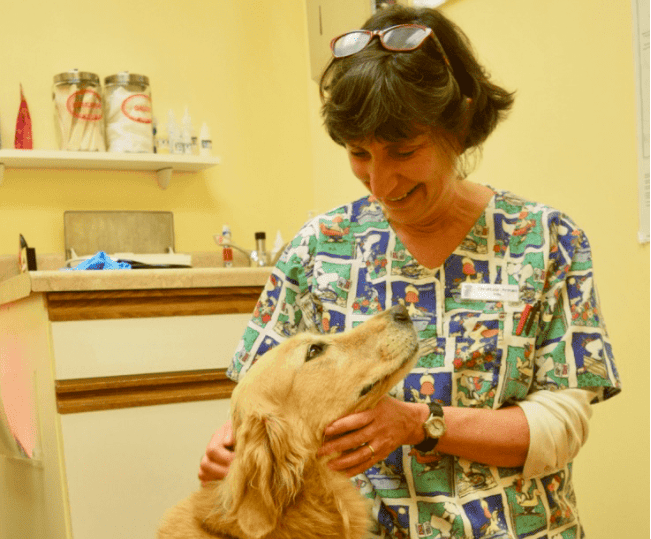
What if you don’t have a valid rabies certificate?
Arriving at the Canadian border without a proper rabies certificate likely means you’ll be jumping through some additional hoops.
First, you’ll have to have your dog vaccinated for rabies within two weeks of your arrival. Then you’ll have to take the vaccination record to a Canadian Food Inspection Agency office .
In addition to the vaccination cost, you’ll incur administrative fees for each animal. These fees are due when you cross the border.

What if your pet can’t be vaccinated for rabies?
If your dog or cat can’t be vaccinated for rabies due to his health, you can apply for an exemption to the rabies certificate requirement. Applications, submitted in writing to the National Centre for Permissions , must include a letter from your veterinarian stating the specific condition preventing the vaccination of your pet. You also have to include the results of a Rabies Neutralising Antibody Titre Test meeting the minimum titre requirements.
Upon approval, your pet will still need an inspection by a CFIA veterinarian when you arrive in Canada. You’re responsible for making arrangements for the inspection at your port of entry before the animal travels.
Health Certificate When Entering Canada
The Canada Border Services Agency inspects all pets traveling to Canada to ensure the animal’s rabies vaccination is current and the animal description matches. The agents also visually inspect the animal to ensure that there are no visible signs of illness or injury.
It is possible for the border agents to refer any animal crossing the border for secondary inspection. But as long as your dog is healthy, this is unlikely to happen.
Generally, health certificates are not necessary when traveling with your pets to Canada. But, if a pet appears to be ill, the border agents can request a health certificate from a veterinarian. Their primary concern is that the pet’s condition is not contagious.
If you’re traveling with a pet with an obvious health condition, we recommend getting a health certificate from their vet prior to your trip. It’s a bit of a hassle, but it could help you avoid a delay border!
Pets flying to Canada must also meet the requirements of the airline on which they’ll be traveling. Most airlines require that all pets have a current health certificate.
READ MORE ⇒ Tips for Traveling to Canada with a Cat

Transport Pets Safely
Canada has strong regulations in place to help protect all animals from injury and suffering during transport. To ensure your pets are safe while traveling, follow these suggestions:
Contain your pet – Buckle up animals that could distract the driver in a seat belt harness or secured carrier. In addition, pets should not roam freely in the back of pick-up trucks, and must not be exposed in any way to flying debris.
Watch the weather – Don’t leave animals in parked vehicles for long periods of time, especially in hot or cold weather. If you must leave your pet unattended in a vehicle for a short period of time, ensure it has fresh water and leave windows open a little on either side of the vehicle to create a cross-breeze.
Provide food, water, and rest – On long trips, make sure your pet has food and water and that you make regular stops so it can rest or get out and walk around.
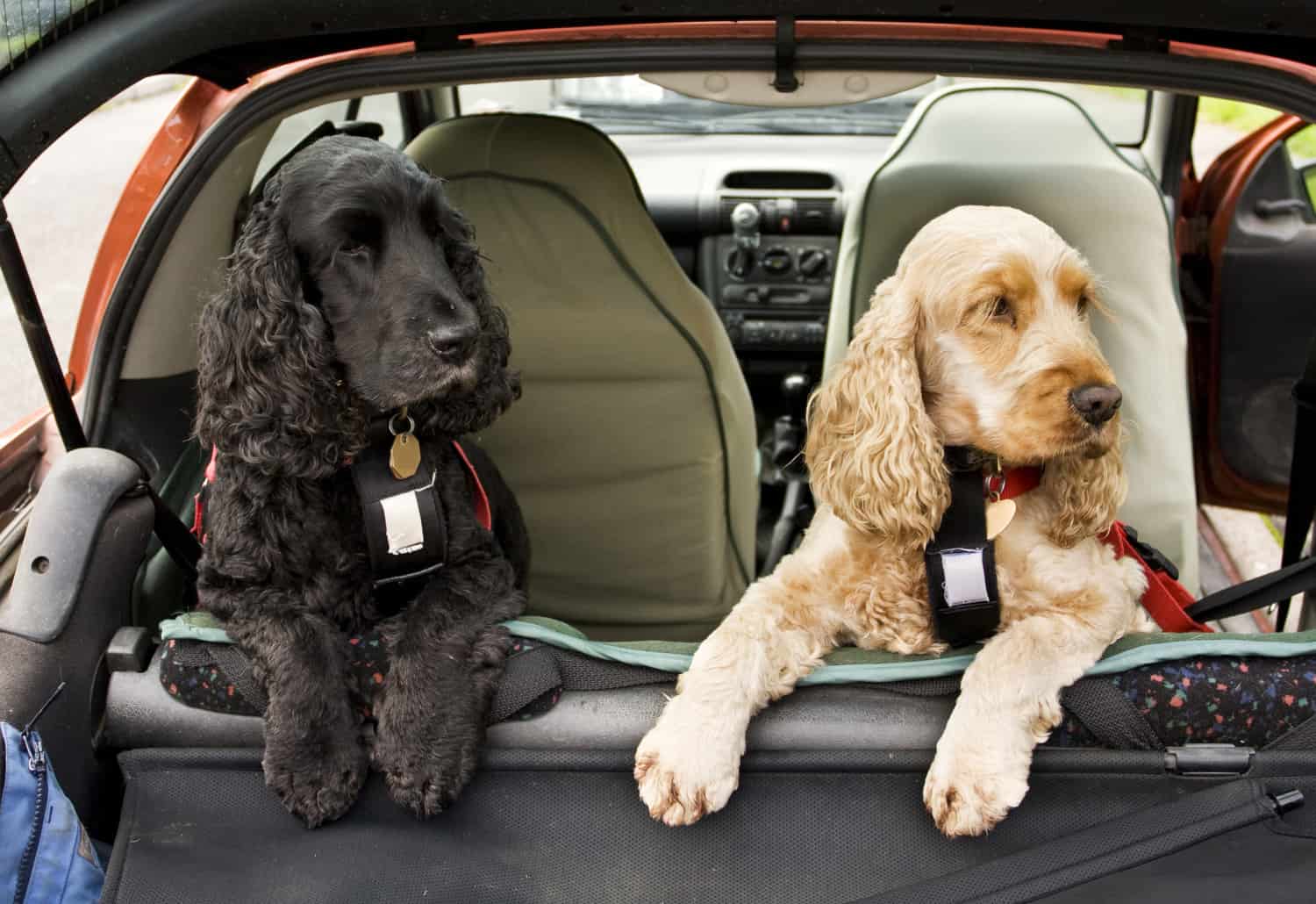
Taking Pet Food And Treats Into Canada
Visitors traveling with pets to Canada from the United States can bring up to 20 kg (44 pounds) of pet food and treats into Canada for their personal use. This is the total amount of pet food and treats allowed, regardless of the number of pets traveling with you. In addition, the pet food and treats must meet ALL of the following requirements:
- Pet food and treats must be from the United States, commercially packaged, and unopened.
- All pet food and treats must be in the possession of the traveler at the time of entry.
- The animal that will eat the products must accompany the traveler at the time of entry.
- Any pet food and treats imported into Canada by the traveler must be fed only to the animal that accompanied the traveler into the country.
For longer trips, or if you’re traveling through Canada to or from Alaska, consider taking a dehydrated pet food with you. We love The Honest Kitchen dog food and it’s great for traveling because a 10 pound box makes 40 pounds of food!
READ MORE ⇒ What To Pack For Your Dog For An Overnight Trip
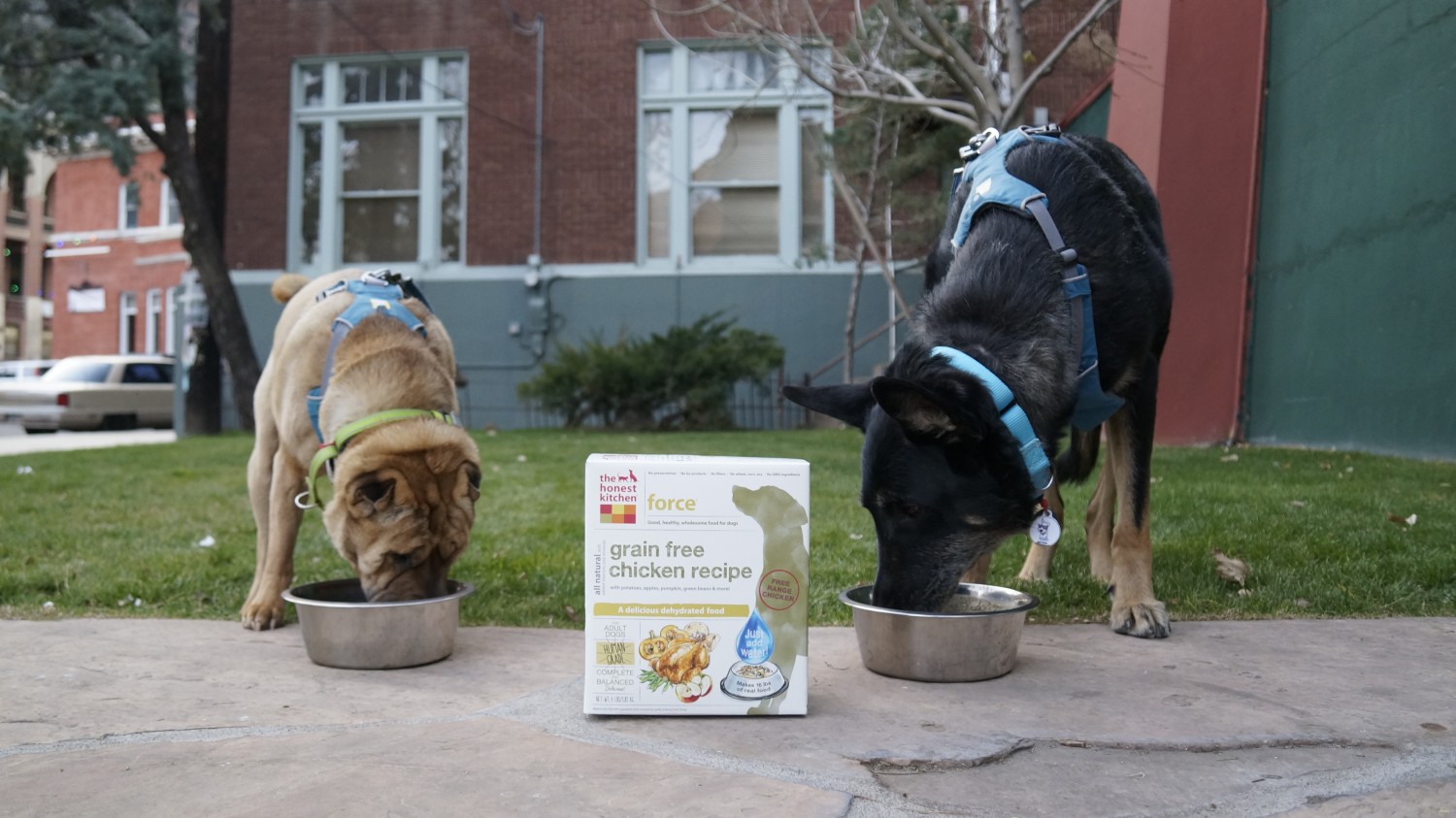
No Requirement For Microchips or Tattoos
Canada does not require a microchip or tattoo identification for pet dogs and cats. However, some type of permanent identification can help your pet get home if they get lost.
Traveling With Other Types Of Pets To Canada
Not everyone travels with cats and dogs. Here are the rules for traveling to Canada with less common pets:
Amphibians and Reptiles
Imports of amphibians and reptiles (other than turtles and tortoises) are controlled by the Convention on International Trade in Endangered Species of Wild Fauna and Flora and/or other restrictions under the Wild Animal and Plant Protection and Regulations of International and Interprovincial Trade Act , which are administered by the Canadian Wildlife Service. If you plan to bring an amphibian or reptile to Canada, you should contact the Canadian Wildlife Service .
Birds are considered pets for Canadian import purposes if they are personally owned and cared for, and are a species commonly known as caged birds such as psittacines (birds in the parrot family), song birds, toucans, canaries, finches, cardinals, etc.
To travel with your pet bird to Canada, you must meet all of the following requirements:
- Your bird must accompany you or a member of your immediate family.
- The bird must appear healthy when inspected at the port of entry.
- the bird was in your possession for the 90 day period preceding the date of importation and wasn’t in contact with any other birds during that time
- the bird is your personal pet and won’t be sold
- You or any member of your family must not have imported birds into Canada under the pet bird provision in the past 90 days.
In cases of a disease outbreak, an Export Veterinary Certificate from the United States might be required. Check the Canadian Food Inspection Agency for more information.

Ferrets can only travel to Canada from the United States. They can cross the border without an import permit if they have a valid rabies vaccination certificate. The ferret must have received the rabies vaccination in the 12-month period preceding the date of import. Ferrets less than 3 months old are not subject to any import restrictions.
Pet rabbits from the United States do not require an import permit or health certificate to enter Canada. When you arrive at the border, present your rabbit to Canada Border Services Agency staff for inspection. Also provide proof that the rabbit has lived in the United States for the 60 days prior to entering Canada.
Most pet rodents, including chinchillas, guinea pigs, hamsters, mice, and rats can travel to Canada without an import permit or health certificate. Border agents may inspection your pets related to the humane transport of animals regulations.
There are import restrictions for certain (or specific) pet rodents, including prairie dogs, gambian pouch rats, or squirrels from most countries; and all rodents from Africa.

Turtles and Tortoises
Turtles and tortoises arriving from all countries require an import permit. And the animals must have been in your personal possession in the country of origin and accompany you to Canada. You should submit the application for permit to import at least 30 days before your arrival.
Breed Specific Legislation In Canada
If your Canadian road trip will take you to or through the Province of Ontario, and you’re the owner of a bully breed, please read this information carefully. You might need to change your route.
Province of Ontario
Ontario has an ugly Breed Specific Law that bans “pitbull-type” dogs from the province. Police and animal control officers can search for and seize any dog deemed to be a “pit bull-type” based on visual inspection.
If the authorities determine the dog is a “pit bull-type,” the dog is euthanized, even if it didn’t break any other law. Here is a summary of the law from Ontario’s Ministry of the Attorney General.
READ MORE ⇒ Tips for Traveling with Pit Bulls

There are no exceptions to this law for tourists traveling with their pets. So, if you have a pit bull, please avoid Ontario. And if you have a dog that could be mistaken for a pit bull, carry documents proving your dog’s pedigree when traveling in Ontario.
Throughout the rest of Canada, there are municipalities with breed restrictions and bans. Plan to avoid them. Visit the Justice for Bullies website for a map of locations with breed specific laws.
Pet Friendly Destination Ideas In Canada
Canada has some gorgeous pet friendly vacation destinations to consider. Here are a few of our favorites!
The Complete Pet Friendly Guide To Jasper National Park
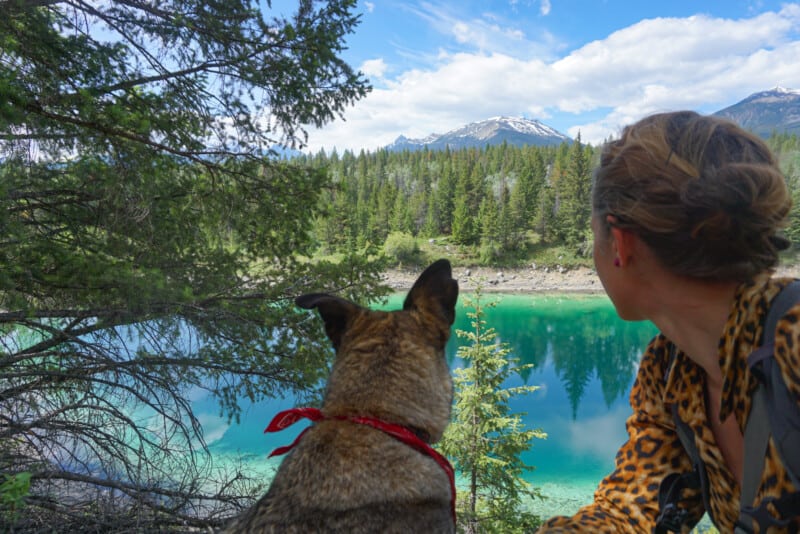
Dog Friendly Hike at Lake Louise
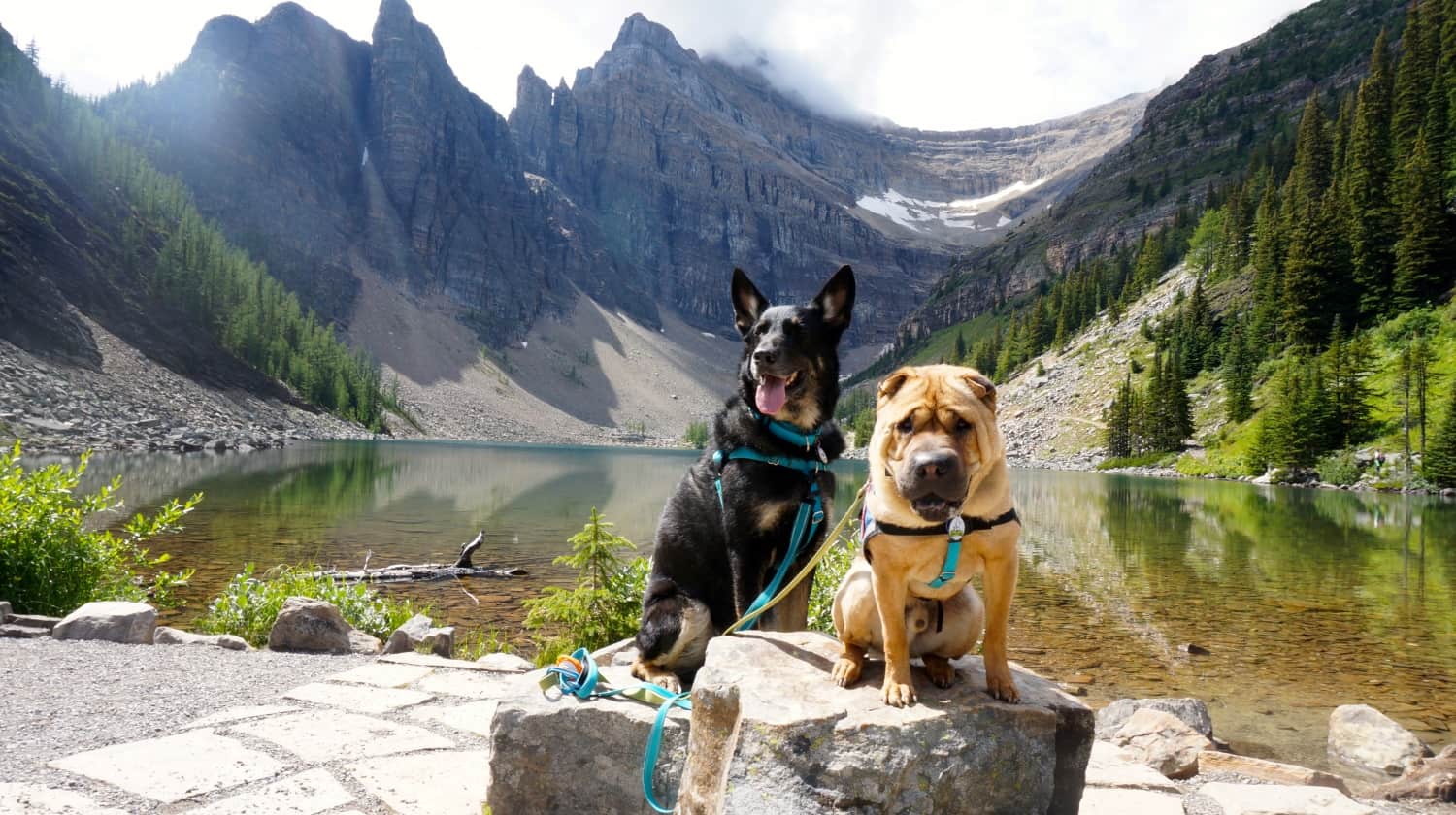
A Pet Friendly Guide To Banff National Park
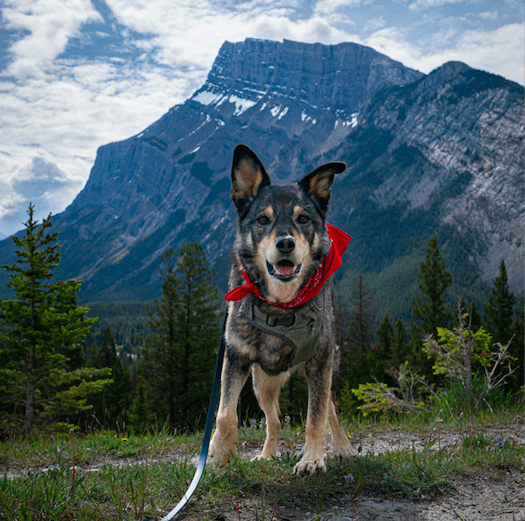
Dog Friendly Road Trip In British Columbia: Vancouver To Kamloops And Back

Vancouver’s Top 5 Dog Friendly Things To Do
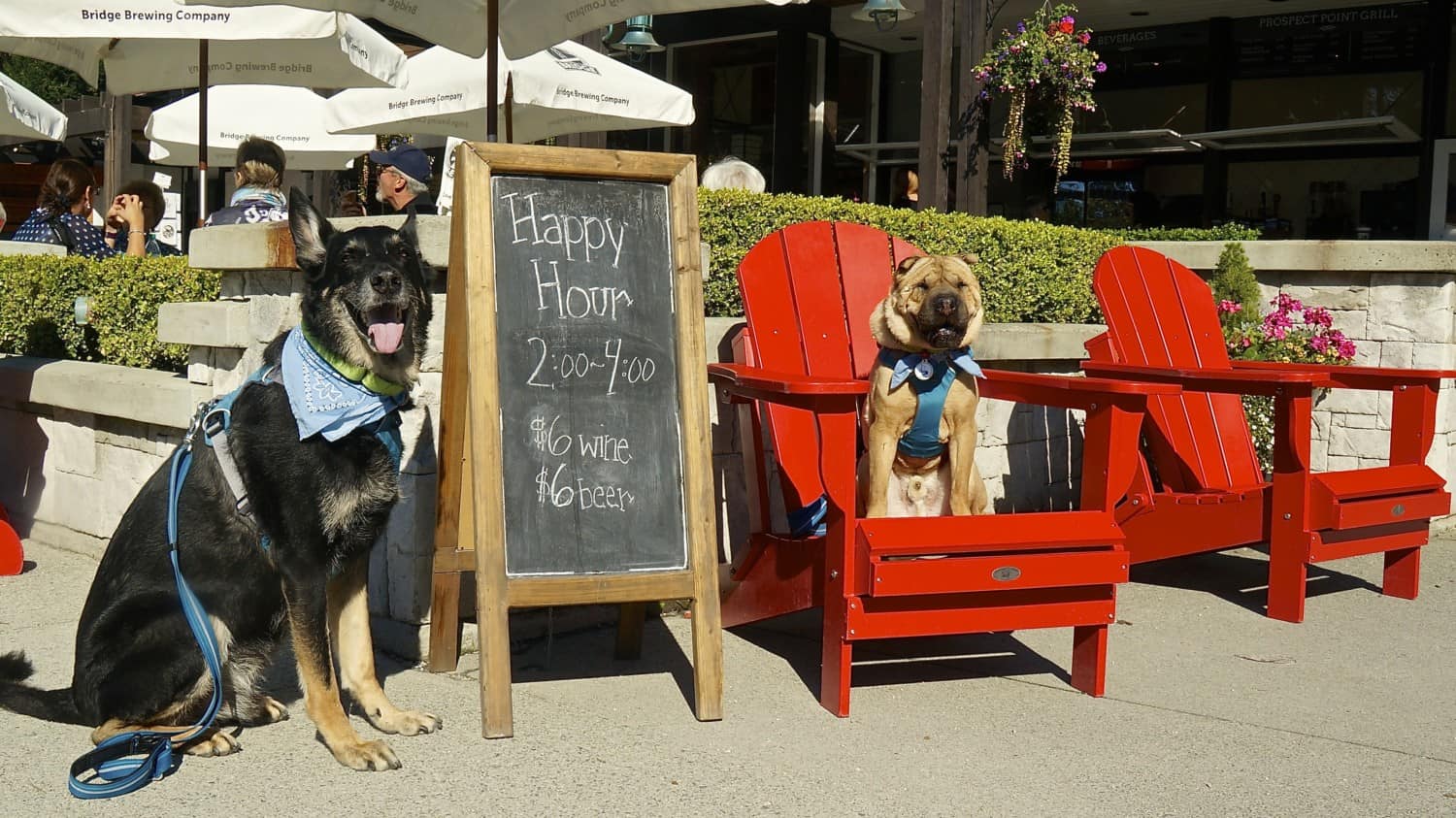
Documents Needed When Returning To The United States With Pets
Rabies certificates not required for cats and dogs traveling from canada to the united states.
All pets must appear healthy to enter the United States. Cats, regardless of where they’re arriving from, don’t need proof of rabies vaccination to enter the United States. Things are more complicated for dogs.
After October 14, 2021, dogs coming from c ounties considered high-risk for importing rabies must have CDC Dog Import Permits and can only enter the country at approved ports of entry .
Luckily, Canada isn’t a high-risk country on the CDC website . So, dogs traveling from Canada to the United States don’t need to present a rabies vaccination certificate or other paperwork. Still, the CDC recommends all dogs receive a rabies vaccination.
Also keep in mind that some states require vaccination of cats and dogs for rabies. So it is a good idea to check with state and local health authorities at your final destination.

Health Certificate When Entering the United States
Like in Canada, if your pet is healthy he won’t need a health certificate to come into the U.S. However, if there could be any question about your pet’s health, we recommend getting a health certificate from a veterinarian that states his condition is not contagious.
READ MORE ⇒ What You Should Know About Emergency Vets Before You Need One
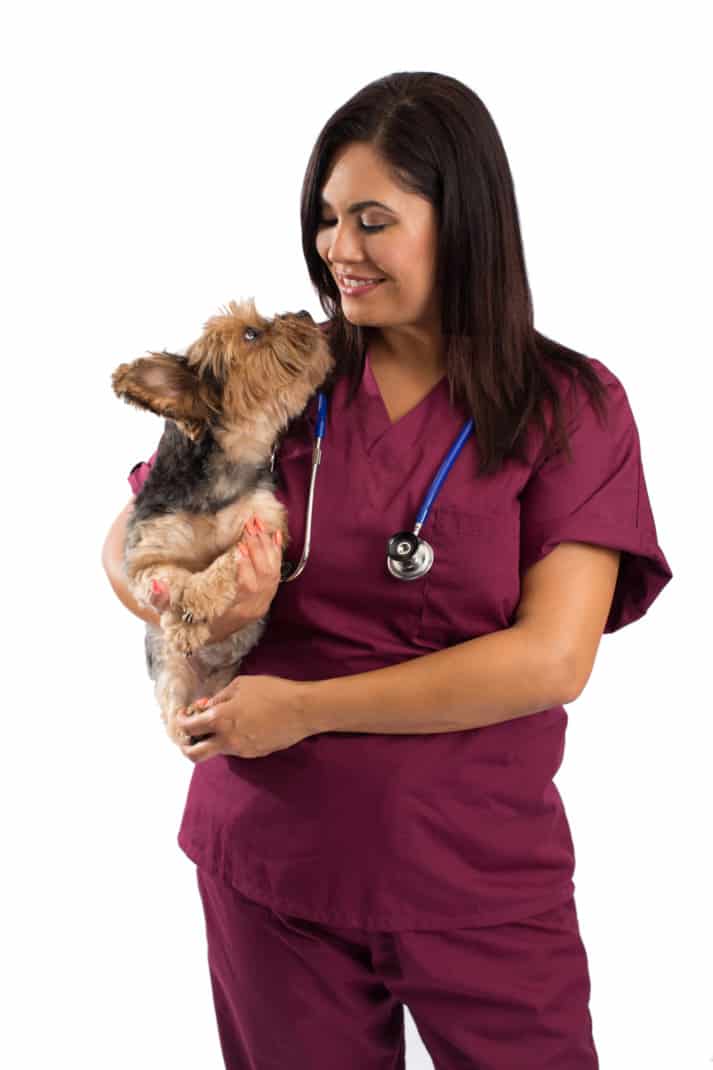
Taking Pet Food And Treats Into The United States
When driving from Canada to the United States, you can bring up to 50 pounds of pet food purchased in Canada. The food must meet the following requirements :
- Does not contain lamb, sheep, or goat meat
- Shelf-stable (not needing refrigeration) and sealed (never opened) containers of pet food must in commercial packaging
- Labels on the packaging must clearly list the ingredients and country of origin
- Manufactured in Canada or the United States only
Pet foods containing sun-dried, freeze-dried, or raw products cannot be imported for personal use.
In Real Life
The requirements are pretty straight forward. But if you’re still losing sleep, here’s what it’s really like to cross the border with your pets .

We hope this summary makes it easier for your to plan your pet friendly trip Canada! For more ideas on places to visit, be sure to check our pet friendly destination guides .
Hi. I am travelling with my golden retriever for the 1st time to Canada. I read in one of your blogs that dog food containing lamb is not permissible when returning to USA. My dog has food allergies, and his food contains lamb. can you share some more information on that. Thanks
Hi Bhagyashree, and thanks for your note! First, it’s very unlikely that your dog’s food will be checked by the border agents. That being said, it’s always better to be prepared. So I’d recommend buying the smallest package needed to feed your dog while you’re traveling. Leave the package closed for when you cross the border into Canada and open it once you’ve arrived. Hopefully your dog eats most of the package during your visit. If there is any left, and you’re checked by the US border agents when you return, any pet food or treats that are in an opened bag or container will have to be disposed of. I hope that helps and that you have a fantastic trip!
Thank you Amy for your guidance. Will keep that in mind. Thanks again.
Our 6th old pup will have his rabies shot on aug 21 and we will be leaving for our circle tour on sept 10 th is this enough time to enter Canada
Hi Sandy, and thanks for your note. Canada does not require a vaccination waiting period, so your pup can travel to Canada immediately after he or she receives the rabies vaccination. I hope that helps and that you all have a great trip!
Hi! What about state-specific requirements when driving back over the US border? NY State, for example, says they require a health certificate when “importing” an animal… is that what it counts as even after just a week’s vacation?
Hi Philip! Yes, some states have additional rules and how they define “importing” is different from state to state. For more information, you could call the State of New York’s offices. However, in 12 years of traveling full-time, we were never checked by a state authority when traveling from Canada into the United States or from state to state. Only the federal border agents checked our documents. I hope that helps and that you have a great trip!
Make sure to subscribe to our newsletter and be the first to know our latest news and pet friendly activities.
Travel Inspiration
National parks, hit the beach, mountain getaways, cities to explore, iconic road trips, unique attractions, related posts.

Session expired
Please log in again. The login page will open in a new tab. After logging in you can close it and return to this page.
We know you’re excited to travel!
In order to save your trips and favorite destinations, you need to set up an account or login .
By creating an account you agree to our Terms & Conditions
Thanks for joining GoPetFriendly!
Please check your email to confirm your registration

Don't have an account? Join Now!
Sorry we can't find any pet friendly listings in our database. Please make sure your search is spelled correctly or try typing fewer characters. nearby ! -->
Do you know of a pet friendly place here? Let us know.

Taking A Dog To Canada: Rules and Regulations
Going on holiday with your dog to Canada is definitely a holiday worth taking. You see taking a dog to Canada is not that difficult, but there some things you will need to know first before you start booking that holiday with your dog in mind.
In this article your find everything you need to know, about what the regulations are when traveling with your dog.
If you’re thinking about going on holiday to Canada or you thinking about moving there,
and you’re wondering if you can take your dog with you, then you’re in the right place!
Taking A Dog To Canada
Now the rules and regulations are slightly different from if you were visiting a country in the EU,
or when entering with a domestic dog in Canada, your dog does not have to be quarantined.
Also, Canada does not require a microchip or tattoo identification for dogs that are imported as pets.
However, any dogs under 8 months of age imported under the commercial category must be identified by an electronic microchip.
The Canada Border Services Agency may refer any animal presented at the border for secondary inspection by the Canadian Food Inspection Agency For more information Click here
Your dog will need to be vaccinated against rabies , before entering Canada, But if your dog is less than 3 months of age at the time of entry, then a rabies vaccination is not required. You will need to show proof of the dog’s age if requested.
All dog vaccinations are carried out by an Official Veterinarian, To enquire about getting your dog vaccinated against rabies simply call your local vet and they can advise you further.
When bringing a Dog to Canada you will have a documentary inspection by the Canada Border Services Agency to make sure your dog’s rabies vaccination is up to date and that your dog’s description matches.
They will also visually inspect your dog to ensure that there are no visible signs of any illness.
There are current fees for this inspection listed below…
- $30.00 plus tax for the first animal in the shipment
- $5.00 plus tax for each additional animal in the shipment
If your dog does not meet Canada’s import requirement for rabies certification even if your dog is being imported from the US.
The dog will undergo vaccination for rabies at the owner’s expense within two weeks of its arrival and the following fees apply.
- $55.00 + tax for the first animal in the shipment; and
- $30.00 + tax for each additional animal.
Taxes or duties are calculated by the CBSA, and any fees must be paid at the time of inspection. All of this information you can get from the Canada Border Services Agency website by clicking on the links above.
Dogs On A Plane
Now if you’re using Air Canada they Allow dogs that are under 22 lbs 10 kg this is including the dog carrier,
with the maximum dimensions of 21 x 38 x 43 cm, they can travel with you in the cabin.
You can travel with two dogs but only one carrier per passenger in the cabin.
If your dogs and carrier exceed the dimensions or weight limits they will have to travel in the cargo hold. Pet fees will apply!
You’ll need to arrive a full 30 minutes prior to the recommended check-in time.
There is another Airline that will accept dogs in the cabin, But the rules will be different with each airline.
If you are unsure which airlines allow dogs on a plane or will accept your dog in the cabin, here’s an article below your find very useful.
Related Article
- 10 Airlines That Allow Dogs In The Cabin
The price for travelling with your dog can be anything up to $100 including taxes each way, this also depends on your destination.
Taking Dog Food Into Canada
When traveling to Canada from the U.S. you are allowed to bring up to 20 kg of dog food,
and treats with you, but only if you meet all of the following requirements below.
- The dog food must be of United States origin and be commercially packaged
- The dog food must be in the possession of the traveller at the time of entry from the U.S
- The animal that eat’s the imported dog food must accompany the traveller at the time of entry
- The dog food is fed only to the animal that accompanied the traveller into Canada
Banned Dog Breeds In Canada
Currently, in Manitoba and Ontario in the city of Winnipeg, there are bans on certain breeds listed below that are classed as dangerous dogs, to this day there are still groups of people calling for the law to be based on behavior and focus more on responsible ownership.
- Staffordshire bull terrier
- American Staffordshire terrier
- American pit bull terrier
- Pit bull terrier
- Or any dog that has an appearance or physical characteristics

Dog Carrier
Before travelling with your dog to Canada you will need a Pet Carrier or cage depending on the size of your dog.
Airlines will not onboard your dog unless you are using a suitable dog carrier or cage as per by the airlines.
As I said before each airline has different rules and regulations so it’s always best to check with your airline first before booking your flight.
If you don’t have a dog carrier already, don’t worry, There are all kinds of pet carriers on the market that have already been approved by the Airline.
To view, some Airline Approved Dog Carriers and read Reviews I recommend you head over to Amazon’s Website there you will be able to find the recommended size, weight, and price.
Dogs Health Certificate
You don’t need a health certificate when bringing your dog into Canada. but as mentioned before the border agents may refer your dog for a secondary inspection.
If your dog shows any signs of being ill when entering Canada the border agents can request a health certificate from a veterinarian. This is to check that your dog’s condition is not contagious.
Dogs Health
Always consider the health of your dog when travelling, I’ve said this many times but before you start your journey with your dog, make sure he or she is ready to board the plane,
You see not all dogs feel happy travelling on a plane, They might show unusual behavior if they board a plane without notice.
Always refer to your local vet about this, they can advise ways to make the flight feel much more comfortable for your dog.
A sudden change in the climate is also something else you need to take into account.
A change in the environment can cause a lot of stress for your dog to handle. The weather might be too hot or cold for your dog and this can lead to some problems.
Like I said it’s always best to talk to your vet about concerns you might have and to make sure the dog is perfectly fine to travel abroad.
Pet-Friendly Hotels In Canada
The next thing you want to check when booking your hotel is making sure its Pet friendly,
Canada has many hotels that welcome pets the hardest part is finding the right one, So I recommend searching online, using a website called booking.com, I use them myself.
This way it’s quick easy and hassle-free, there you can simply put your destination where you want to stay, then they will do the rest and search the area to find all the pet-friendly hotels for you.
Related Posts

How to Recognize a Happy Dog? 15 Signs and Insights

Modern Dog Crates: How to Choose Them?
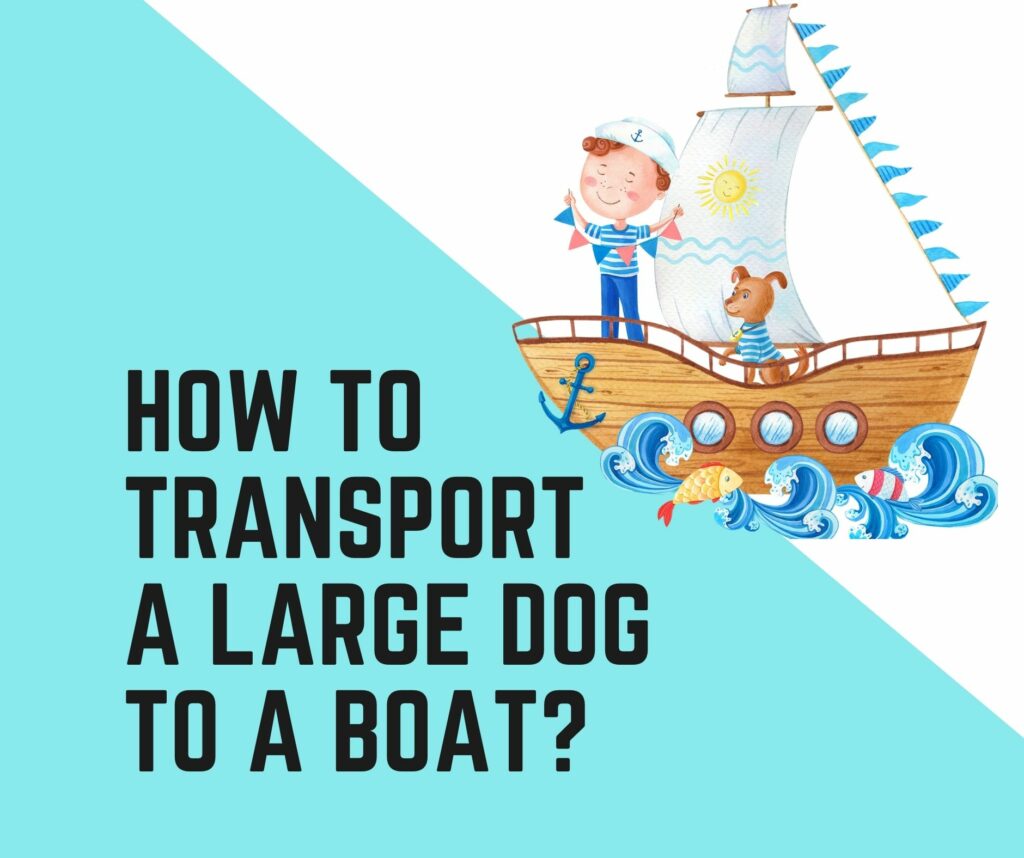
How Do You Transport A Large Dog To A Boat? 10 Tips
Questions about traveling with a pet?
Contact | email | facebook.
Home > Pet Passports > Canada Pet Passport & Import Regulations
Canada Pet Passport Regulations
All dogs imported commercially from countries at high-risk for dog rabies will not currently be permitted entry into canada. commercial transport will include, but are not limited to dogs for change of ownership, resale, adoption, fostering, breeding, show or exhibition, research, and other purposes. this includes dogs that have resided in or have visited high-rabies countries within the past 6 months. cats are not included in this ban..
There will be no quarantine imposed on your pet when entering Canada as long as the following requirements are met. Unless otherwise stated, the regulations below apply to domestic dogs, cats and ferrets including service and emotional support dogs and cats. Owners of other pets should refer to item 9.
Pet Microchip

Canada does not require that your pet be identified with a pet microchip unless the import is commercial (see below), but it is strongly recommended that your pet be identified with a 15 digit ISO 11784 compliant pet microchip .
The microchip should be implanted by your veterinarian, veterinary hospital or trained nurse. You should receive documentation as to the manufacturer of the microchip and instructions on how to register your pet's information in the manufacturer database.

Vaccinations
Dogs over 8 months of age and cats over 3 months of age entering canada from countries canada considers as rabies free*.

Your dog or cat will need either proof of current rabies vaccination (EU Pet Passport is accepted) OR a health certificate in English or French and completed by a licensed veterinarian in the origination country.
The certificate must clearly identify your pet and a governmental veterinarian must state that rabies has not existed in the originating country for the six (6) month period immediately preceding the shipment of your pet; and, your pet has been in that country for the six (6) month period or since birth. A licensed veterinarian in your country can also do this as long as the certificate is endorsed by a governmental authority responsible for the import and export of live animals.
The same requirements apply to dogs or cats that originated from Canada and are being returned directly from a country designated by the Minister as having been free from rabies and living there for not less than six (6) months.
*Countries Canada classifies as rabies-free
Australia, Fiji, Finland, Iceland, Ireland, Japan, New Zealand, Sweden and the United Kingdom (England, Scotland, Wales and Northern Ireland.
Dogs over 8 months of age and cats over 3 months of age entering Canada from all other countries
If your dog or cat is entering Canada from a country not included on the list above, then you will need the following:
- A valid rabies vaccination certificate issued, in either English or French, by a licensed veterinarian from the country of origin. (EU Pet Passport is accepted.) There is no waiting period after the vaccination is administered. Canada does recognize the three year rabies vaccination. Please note that if a validity date does not appear on the certificate, then it will be considered a one year vaccine.
- Your airline may require a veterinary certificate of health.
Unaccompanied dogs under 8 months of age entering Canada from any country
Due to the problems with puppy mills and the movement of puppies, Canada is very sensitive to dogs entering the country under eight (8) months of age and will assume that, if you, as the owner of your dog, are not traveling with your dog and its papers are not in your name, it may be considered a commercial* shipment by customs and be subject to a microchip , health certificate issued within 48 hours of entry, and an import permit.
Puppies entering Canada without their owners or commercially* will need to be vaccinated for distemper, hepatitis, parvo virus, and parainfluenza, no earlier than six weeks of age. Arrangements should be made with veterinary officials at the port of entry for inspection outside of normal working hours.
Commercial transport
See Note above for restrictions on commercial transport of dogs from countries classified as high-rabies.
Dogs imported for purposes of being given or transferred to another person, resale, adoption, fostering, breeding, show or exhibition and research will be classified as commercial.
An exception to this requirement involves puppies traveling from the United States entering Canada for competitions.
** If proof can be provided that your dog is entering Canada temporarily and is registered in a competition, show or a trial organized by a recognized association and meets all other requirements, an import permit is not required.
If this proof is unavailable, then the owner must apply for an import permit at least 30 days in advance.
All dogs entering Canada under 8 months for commercial purposes must enter Canada as air cargo, if flying.
Entering Canada with puppies under three (3) months of age
Dogs and cats under three (3) months of age are exempt from import requirements if entering Canada with their owner. Proof of age and ownership should be available.
Medically Certified Guide Dogs
Assistance dogs that are endorsed as a guide, hearing or other service dog are not subject to any restrictions for importation when the person importing the dog is the user of the dog and accompanies the dog to Canada.

Rabies Titer Test

A rabies titer test is not required to enter Canada from any country.

Pet Health Certificate
See rabies vaccination requirements above. If a pet health certificate is required, it must be in English or French and completed by a licensed veterinarian. It should identify the animal, the dates of vaccination, the manufacturer and the expiration date of the rabies vaccine. The Canada does accept 3 year rabies vaccinations. Import permits will be required for puppies entering Canada unaccompanied.
Entering Canada by Air

Pets can enter Canada at international airports in many cities including but not limited to Vancouver, Calgary, Ontario, Quebec and Montreal.
Dogs and cats entering Canada from all countries except the United States will be subject to inspection. There is a $30.00USD fee for this service for the first animal and $5.00USD for each additional animal. Proof of rabies vaccination will be required.
All domestic dogs and cats must be free of evidence of disease communicable to humans when examined at the port of entry. If your pet is not in apparent good health, further examination by a licensed veterinarian may be required at the owner's expense.
Puppies and Kittens

Puppies and kittens under the age of 3 months and not vaccinated for rabies entering Canada are exempt from import requirements. See above for information regarding puppies and kittens between the age of 3 and 8 months.
- Traveling with a puppy
Banned Breeds

The American Staffordshire Terrier, Pit Bull Terrier, American Pit Bull Terrier, and Staffordshire Bull Terrier and their crosses are banned from entering or transiting the province of Ontario. The City of Toronto also bans the breeds. Transiting Toronto is not permitted on WestJet. When transiting Toronto, advance notice must be provided and an agent must transit your dog.
The following dogs or their mixes are banned in Winnipeg: American Pit Bull Terrier, Staffordshire Bull Terrier or American Staffordshire Terrier.
Exporting Pets Living in Canada
Other animals.

Rabbits entering Canada from the United States do not require documentation although they may be inspected by border officials. Rabbits imported from any country other than the United States will need an import permit and will be subject to quarantine. Your rabbit must be accompanied by you, the owner, and must be accompanied with a statement that they have always been in your possession as a pet. You should contact the local CFIA office in the province into which your rabbit will be imported.
Rodents (guinea pigs, gerbils, mice, rats, chinchillas and hamsters) do not need a permit or health certificate to enter Canada.
Ferrets entering Canada over the age of 3 months from the United States must be accompanied by proof of current rabies vaccination. If entering Canada from any other country with a ferret, an import permit issued by the local CFIA office in the destionation province is required.
Birds: Owners must accompany their domesticated birds into Canada from the United States. The owner must sign a declaration stating that the birds have been in his/her possession for the 90 day period preceding the date of importation and have not been in contact with any other birds during that time. The owner must sign a declaration that their bird is not intended for resale. The bird must be found healthy during inspection. The bird must not have entered Canada for 90 days preceeding their current visit.
Birds entering Canada from other countries will require an import permit from the local CFIA office in the destination province. Canada bans the import of birds from certain countries and has additional requirements from others. More information can be obtained at the local CFIA office.

If your pet is not a dog, cat or ferret, and especially if it is a turtle or parrot, you should verify that it is not protected under the Convention on International Trade in Endangered Species of Wild Fauna and Flora (CITES). You will need to apply for additional permits if this is the case. Over 180 countries participate and enforce CITES regulations.
- Search CITES database .
- Read More about CITES
Need More Assistance?

To the best of our ability, we ensure that recommendations given on PetTravel.com reflect the current regulations. We cannot predict how a given country may enforce these regulations. Noncompliance may result in the need to make arrangements to put your pet into quarantine at your expense, return your pet to the country of origin, or euthanize your pet. We suggest that you minimize the disruptions that may occur by following the rules of the country you are visiting.
Further detail on import permits, costs, tests and procedures are available at minimal cost at PetTravelStore.com under Pet Passports. We also stock all the equipment and accessories you will need for traveling with your pet. Same day shipping Monday through Friday until 2:00 PM EST.
HAVE QUESTIONS OR COMMENTS???
Due to the high demand, we are unable to respond to your question quickly if posted below. If you need a fast response, you can post them directly to our Facebook page , blog , or forum . We will respond as soon as we can.
Please note that the accuracy of comments made from Facebook users other than Pet Travel have not been verified. We do not endorse any person or company that may offer transport services through posts to this webpage.

Traveling to Canada with a Dog from the United States
Categories Canada , International Travel with a Dog , Travel with a Dog

Traveling to Canada with a dog from the United States is easy peasy lemon squeezy as far as border crossings go. We’ve been several times with Sora, across three different borders (two in WA and one in Idaho) and have made it through without issue each time.
A bit of planning is necessary prior to departure, so we have outlined everything you need to know in order to successfully take your dog across the Canadian border by car.
Can You Bring Your Dog to Canada?
The main import requirement for a dog entering Canada is a certified rabies vaccination. Customs officials may also request a health certificate and microchip. Depending on the province visited, specific breed restriction regulations may exist limit entry (more information below).
According to the United States Department of Agriculture – Animal and Plant Health Inspection Service (USDA-APHIS), the requirements for your dog depend on your purpose for entering Canada.
If your dog is for personal travel or assistance (like a service dog), the requirements are straightforward. However, if you’re entering for commercial purposes, the regulations are a little more stringent.
Requirements for Traveling to Canada with a Dog
Bringing your dog with you to Canada, while relatively simple, requires following a few regulations.
Rabies Vaccination Certificate
Dogs under three months of age at the time of importing, who are accompanied by their owners, are not required to have a rabies vaccination. However, owners must provide proof of the dog’s age.
If your dog is over three months old, then you must carry and provide a rabies vaccination certificate on request.
To get the rabies certificate, simply head to your veterinarian and ask for a proof of rabies vaccination. Canada does recognize three-year rabies vaccinations.
If You Do Not Have a Rabies Certificate
Dogs entering Canada without a rabies vaccination certificate will be required to undergo a rabies vaccination at the owner’s expense within two weeks of arrival.
Costs associated with the service include:
- $30 + tax for the first animal
- $5 + tax for any additional animals
Microchip Requirement
Canada does not require tattoos or microchips when importing an animal as a personal pet. If your dog is transported commercially and is under eight months old, then it must possess an ISO electronic microchip (which is different from the ones typically used in the United States).
Health Certificate
Health certificates for dogs are issued by a licensed veterinarian after a health examination. The health certificate ensures the pet is free from any infectious diseases and meets all requirements for importation. The USDA typically stamps and approves the private certificate.
The certificate must meet the following (as noted from the Canadian Food Inspection Agency ):
- be written in English or French
- be issued and signed by a licensed veterinarian
- identify the animal (breed, sex, color, and weight)
- state that the animal is vaccinated against rabies
- indicate the date of rabies vaccination
- indicate the trade name and the serial number of the licensed vaccine
- specify the duration of immunity (otherwise, it will be considered valid for one year from the date of vaccination)
Dogs under eight months old traveling with their owners are only requires to provide proof of rabies vaccination.
Dogs younger than eight months traveling unaccompanied are required to be examined by a licensed veterinarian in Canada within 72 hours of arrival. This vet will then issue a health certificate.

Canada does not have any quarantine requirements. If the border guard admits your dog or pet, then you are free to travel with them as desired.
What to Expect Crossing the Canadian Border with a Dog
Border crossings can be a stressful experience, especially you have a dog along for the ride. However, in our experience, the border guards didn’t even ask us about the dogs.
Why? It’s probably because both countries have a similar low risk for rabies in dogs, cats, and ferrets.
This doesn’t mean you shouldn’t have your paperwork ready to go, just in case. Keep it easily accessible in the front of the car to have ready to present if an agent asks.
The Canada Border Services Agent will likely ask you several questions about your trip including:
- Where exactly you are visiting
- What is the purpose of your trip
- Whom you are visiting
- How long you plan to stay in Canada
These questions are asked mainly to weed out any suspicious travelers. Most of the time the agent will waive you through once they’ve gone through their list.
Breed Specific Legislation
Unfortunately, the stigma and laws associated with certain breeds is in effect in certain Canadian provinces and cities .
Ontario and Manitoba ban the following breeds and dogs whose appearance resemble these breeds:
- American Staffordshire Terrie r
- Pitt Bull Terrier
- American Pitt Bull Terrier
- Staffordshire Bull Terrier
The City of Toronto permits air transit of these breeds, however advanced notice must be provided and an agent is required to transit your dog.
Visit Justice for Bullies for more information on breed bans throughout Canada.
Bringing Dog Food into Canada
We always travel with dog food and treats for the pups. If you’re going to bring your own food, it must meet the following guidelines:
- No more than 20 kg (44 pounds) may be transported.
- The food must be of US origin, commercially packaged.
- The pet food or treats must be in the possession of the traveler at the time of entry from the U.S.
- The animal that will eat the products must accompany the traveler at the time of entry.
- The products must be fed only to the animal that accompanied the traveler into Canada.
It’s likely that the customs officer probably won’t ask about the dog food you’re bringing, but it’s always important to go prepared, just in case.
More Information:
If you still have questions about bringing your dog into Canada, the following websites may help.
United States Department of Agriculture – Animal and Plant Health Inspection Service: Pet travel from the U.S. to Canada
PetTravel.com: Canada Pet Passport Regulations

PIN FOR LATER!

Monday 26th of June 2023
Traveling through eastern Canada later this summer. Do I really need a well health certificate?
Jen Sotolongo
Tuesday 11th of July 2023
If you're coming from the US, then indeed you do. You may not have to show it, but you'll need one if they ask.
Saturday 29th of April 2023
What was it like then bringing the dogs back into the states after your visit in Canada? Any other requirements or paperwork? The same requirements for food?
Monday 1st of May 2023
Oh man, I don't even remember and I did it not too long ago! I don't think they asked anything about my dog, but I believe that it's the same requirements - health certificate and food shouldn't be an issue.

Language selection
- Français fr
Travelling with animals
Before heading to the border with an animal, make sure you are aware of Canadian import and travel requirements. The Canada Border Services Agency (CBSA) officers will inspect and can refuse entry , confiscate or detain an animal if:
- it is undeclared, including family pets
- you do not have the necessary permits/certificates
- it is suspected of being sick or infected with a pest or disease
- the animal is transported in a non-humane way and not kept safe from harm and injury
The Canadian Food Inspection Agency ( CFIA ) is responsible for establishing import requirements for all animals, including domestic pets and non-traditional pets.
Visit importing and travelling with pets for more information.
The CFIA is also responsible for setting guidelines for the humane transport of all animals. To ensure all animals, including cats, dogs, exotics and reptiles, are transported safely, visit the CFIA webpage Protecting Pets When They Travel .
Assistive, personal or commercial dogs
As of september 28, 2022 , commercial dogs at high-risk for dog rabies to be stopped from entering canada.
From this date until further notice, the Canadian Food Inspection Agency will not issue import permits for commercial dogs from countries at high-risk for dog rabies . The CBSA will deny such dogs entry to Canada. For more information: Notice to industry: New measure prohibiting the entry of commercial dogs from countries at high-risk for dog rabies – Canadian Food Inspection Agency (canada.ca)
A personal import includes:
- a personally owned dog by a Canadian resident as a pet or
- an assistive (service) dog that is accompanied by the person to whom the dog is assigned
An assistive (service) dog is defined as a dog that provides a distinct, trained service to individuals who would otherwise be limited in their ability to perform certain tasks.
An assistive (service) dog is exempted from all import requirements if:
- it is accompanied by the person to whom the dog is assigned and
- documentation is presented to support that the animal is certified as a service animal by a recognized organization
Your assigned assistive (service) dog is considered a commercial import if:
- it is travelling with another person or
- it is in special “training status”
Imported “Commercial Dogs” include:
- Dogs for sale (retail), breeding (not direct retail), show or exhibition, scientific research or dogs that have Special Training Status
- Canadian commercial dogs returning to Canada
- Dogs destined for adoption and/or an animal welfare organization
To determine if your dog falls under an assistive ‘service dog’, a ‘personal;’ or ‘commercial' import, visit Travelling with your dog: import rules .
Personal, assistance or commercial dogs
- be the importer of the dog and
- have proper documentation proving that you have ownership
If you are not the owner of the dog or the dog is intended for commercial purposes (which are listed under "Commercial Dog"), it is considered a commercial import.
An assistance (service) dog is:
- a dog that provides a distinct service to the individual it is assigned to (designated handler) and
- has been certified and trained by an organization accredited by the International Guide Dog Federation or Assistance Dogs International
Assistance dogs do not include therapy animals, companionship animals, emotional support animals, or comfort animals.
If your assistance dog falls within the personal category, it is exempted from the rabies vaccination requirements.
Your assigned assistance dog is considered a commercial import if:
- it is travelling with another person or
- it is in special "training status"
Commercial dogs include dogs that are intended to be transferred/given to another person and intended for purposes such as:
- dogs used for breeding, including selling/distributing the offspring, further resale, shows or exhibitions, or scientific research
- dogs that have special "training status"
- dogs intended for further adoption, an animal welfare organization, or fostering, which includes rescue dogs (by an individual or animal welfare organization)
For the most up to date requirements for bringing your dog(s) into Canada, please refer to the CFIA 's Automated Import Reference System (AIRS) .
It is strongly recommended to always travel with the physical original copy of all required documents when bringing your dog(s) into Canada.
Check before you import your exotic pets
Travellers are responsible for determining if their pet is subject to CITES controls and ensuring that they possess the appropriate CITES permits/certificates for importing them into Canada. Exporting requirements for the pet of the exporting country must be met.
Visit Convention on International Trade in Endangered Species of Wild Fauna and Flora (CITES) for more information.
Examples of exotic pets
- Small wild cats
Language selection
- Français fr
Network maintenance
Due to system maintenance, some sections of the site will be unavailable from 3 am to 7 am (EST) on Sunday, December 18, 2022 .
Due to system maintenance, the CFIA website will be unavailable from 7 am to 7 pm (EST) on Saturday, October 16, 2021 . We apologize for any inconvenience this may cause.
Travelling with pets, food or plants
Rules for food, plant and animal products and by-products entering Canada.

Most requested
- Travelling with dogs
- Canadian International Health Certificate
- Bringing a horse from the US
- Search import rules (AIRS)
- Find a form
Services and information
Bringing food into canada for personal use.
Products that are allowed into Canada.
Travelling with pets
Rules for bringing pets into Canada or travelling to another country with a pet.
Protecting your pet when they travel
Tips to make sure your pet has a safe journey.
Importing plants and plant products: what you need to know
Information relating to the importation and domestic movement of plants and plant products.
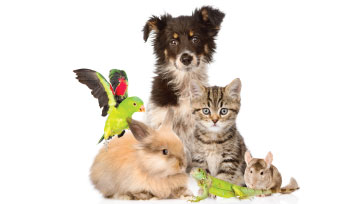
Find out what you need before you travel with your pet or import an animal.
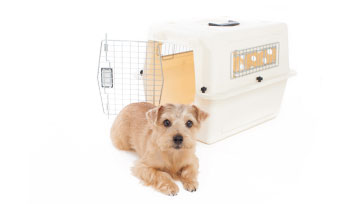
Find out what the requirements are that ensure imported dogs are healthy and travel humanely.

Find out what to watch out for if you are importing a dog you have never met or buying from an on-line broker in Canada.

Learn about travelling with your pets.
Traveling Between the United States and Canada When You Have a Pet
Traveling across the international border with your pet—either from the United States into Canada or from Canada into the United States—should prove largely hassle-free, although some basic regulations need to be kept in mind, including if you are using international flights instead of driving. All U.S. and Canadian citizens traveling for vacation between the United States and Canada are required to show a passport or other accepted secure document. For additional information about secure documents visit www.travel.state.gov or phone (877) 487-2778.
Traveling From the United States to Canada
U.S. citizens taking pet cats and dogs 3 months of age and older into Canada must carry a rabies vaccination certificate signed by a licensed veterinarian that describes the animal, provides proof of rabies vaccination and includes documentation of the product name, lot number and lot expiration date. Collar tags are not sufficient proof of immunization. The certificate also is needed to bring a pet dog back into the United States; make sure the vaccination doesn't expire while you're in Canada. Note: Pit bulls are not permitted to be taken into Ontario.
Vacation and International Flights with Service Animals or Young Animals
Service animals are exempt from import restrictions. Also exempt are puppies and kittens under 3 months old; obtain a certificate of health from your veterinarian indicating that the animal is too young to vaccinate. Note: For details on pet imports, including on international flights, contact the Canadian Food Inspection Agency (CFIA); phone (800) 442-2342 or visit the Web site at www.inspection.gc.ca. If you need assistance while in Canada, contact the Embassy of the United States of America, 490 Sussex Dr., Ottawa, ON, Canada K1N 1G8; phone (613) 688-5335.
Traveling From Canada to the United States
Canadian travelers who plan to vacation in the United States may take pet cats and dogs into the country with no restrictions, but U.S. Customs requires that dogs have proof of rabies vaccination no less than 30 days before arrival. For additional information on U.S. regulations, contact the USDA-APHIS National Center for Import & Export, (301) 734-8364.
How to Get a Canadian Pet Passport in 2023

Whether you are planning on traveling with a pet to or from Canada, there are strict rules that apply.
Getting a Canadian Pet Passport to enter Canada is easy and will just take 2 simple steps:
- Research – entry requirements can vary depending on your pet’s species, age and breed. There are different entry regulations for different pet species. Additionally, certain breeds of dog are banned from entering some provinces in Canada. It’s important to ensure that your pet is permitted. If you are flying, you need to ensure your fly into an airport that allows the import of pets. Furthermore, you will need additional paperwork if your pet is an endangered species.
- Visit the vet – dogs, cats and ferrets need rabies vaccinations and all pets need a general health check at minimum. A microchip is not required, but it is recommended.
In this article we will discuss the requirements to get a Canadian Pet Passport.
What is a Canadian Pet Passport?
Canada does not have an official ‘Pet Passport’, however it is a term used to describe the documents that are required to travel to and from Canada with a pet. Customs officials will need to see these documents in order to clear your pet. Essentially, a pet passport demonstrates that your pet is fit and healthy to travel. With a Canadian Pet Passport, in most circumstances, your pet will not have to face a lengthly quarantine period.
How do I get a Canadian Pet Passport?
Traveling from a rabies-free country., rabies vaccination..
To obtain a Canadian pet passport, you can use a current pet passport. The pet passports must be up to date, showing your pet’s rabies vaccinations are still valid. Usually dogs, cats and ferrets must have either a yearly rabies vaccination or a 3 yearly rabies booster.
Otherwise you will need a rabies country-free certificate.
Rabies Country-Freedom Certificate.
Alternatively, you will need a certificate from your governmental authority stating that rabies has not existed in your country in the past six months. The certificate must also state that your pet has resided in your country for the past 6 months. A licensed veterinarian can do this as long as the document is endorsed by your local governing authority responsible for the import and export of pets.
Health Certificate.
A health certificate isn’t always required to enter Canada, however it is recommended to ensure your pet is well enough to travel. Pets must appear healthy and meet humane transportation requirements.
If a dog or cat is under 8 months old and will not be accompanied by the owner, then he or she will need an animal health certificate. The health certificate must be issued and certified within 48 hours of entry.
Traveling from all other countries.
You can check the specific requirements for your specific pet and residing country here .
Does my dog need a microchip for a Canadian Pet Passport?
A microchip is not required to enter Canada with a pet.
A microchip is a permanent method of electronic identification. The chip is around the size of a grain of rice – and is implanted just under your pet’s skin between its shoulder blades. Each chip has a unique number that is detected using a microchip and scanner.
Although Canada does not require pets to be microchipped before entry, it is recommended. If you were to lose your pet while, a microchip makes it far more likely that you will be reunited.
Banned Breeds.
Different dog breeds are banned in different provinces in Canada, listed below:
- Ontario – The American Staffordshire Terrier, Pit Bull Terrier, American Pit Bull Terrier, and Staffordshire Bull Terrier and their crosses are banned from entering or transiting.
- The City of Toronto – also bans the breeds above, however, air transit is permitted. When transiting Toronto, advance notice must be provided and an agent must transit your dog.
- Winnipeg – American Pit Bull Terrier, Staffordshire Bull Terrier or American Staffordshire Terrier and their mixes are banned from entry or transiting.
Taking other animals to Canada.
Taking rabbits to canada..
Rabbits are permitted to enter Canada from the US without any form of documentation. They may travel to Canda as long as the following conditions are met:
- Owners must have an import permit from the local CFIA office in the destination province
- The rabbit must travel with their owner
- The owner must possess a statement that the rabbit has always been in their possession
- Rabbits may need to spend time in quarantine.
Rabbits do not need rabies vaccinations, or any other vaccinations to enter Canada.
Taking rodents to Canada.
Rodents do not need a permit or health certificate to enter or transit through Canada. The following are species are permitted:
Agoutis, Beavers, Capybaras, Chinchillas, Chipmunks, Coypus, Gerbils, Gophers, Groundhogs, Guinea pigs, Gundis, Hamsters, Jerboas, Lemmings, Maras, Marmots, Mice, Muskrats, Pacaranas, Pacas, Porcupines, Prairie dogs, Rats, Springhares, Squirrels, Tucotucos, Viscachas, Voles.
The Canadian Food Inspection Agency has placed restrictions on the importation of the following pets:
- Prairie Dogs, Gambian Pouch Rats, or Squirrels.
- Any rodents from Africa.
Taking ferrets to Canada.
Ferrets entering Canada from the US over the age of 3 months from the US must have proof of current rabies vaccination.
Ferrets entering Canada from any other country also require an import permit issued by the local CFIA office in the destination province is required.
Taking birds to Canada.
Birds are permitted to enter Canada from the US, as long as the following conditions are met:
- Owners must accompany the bird into Canada;
- The birds must be found to be healthy when inspected at the port of entry;
- The owner must sign a declaration stating that the birds have been in his/her possession for the 90 day period preceding the date of importation and have not been in contact with any other birds during that time;
- The owner must sign a declaration stating that the birds are the owner’s personal pets and are not being imported for the purpose of re-sale; and
- The owner or any member of the family must not have imported birds into Canada under the pet bird provision during the preceding 90 day period.
Birds may be permitted to enter Canada from other countries.
Bird owners from countries other than the US require an import permit from the local CFIA office in the destination province. Canada bans the import of birds from certain countries and has additional requirements from others. More information can be obtained at the local CFIA office.
To prevent the spread of highly pathogenic avian influenza, birds from the following countries are prohibited:
How to use a Canadian Pet Passport
You can use your pet’s Canadian passport just as you would your own passport!
When crossing a border, you will need to inform the customs agent that you are bringing your pet. You will need to inform your travel company that you will be bringing your pet along. It’s important to do this as some companies do not allow pets.
When at the border, you will simply need to present both your passport and your pet’s passport.
It is important to keep in mind that vaccinations must remain up to date in order for your pet’s passport to be valid. Canada accepts both 1 year and 3 year rabies vaccinations. Additionally, remember to check border requirements prior to entry in case the country has additional requirements.
What airlines allow flying a pets to Canada?
Most airlines allow flying pets to Canada. However, depending on the airline you fly with, pet policies differ.
When flying with a pet, it’s important to check airline pet policies before booking any travel. Different airline’s have different rules for flying with pets, including which breeds are allowed, the size and weight of pets that are permitted, and the number of pets they allow. Fees also vary between airlines.
Most airlines will allow pets to fly in the cargo section of their planes, in a climate controlled, comfortable pet zone. Although some pet owners think this will be stressful for their pets, it can actually be a lot calmer than flying in the cabin.
Some airlines will allow pets to fly in the cabin with their owners, but generally only small dogs and cats that weigh under 8kg are permitted. This is because they must fly inside an airline-approved carrier that fits under the seat in front of their owners.
For a list of airlines that allow pets to fly in the cabin with their owners, check:
- 21 Airlines That Allow Flying With Dogs In-Cabin [Prices & Policies]
- 15 Airlines That Allow Flying With a Cat In-Cabin [Prices & Policies]
- 7 Airlines that Allow Rabbits in the Plane Cabin [Policies & Prices]
For a list of airlines that allow other pets on their planes, check:
- 13 Airlines That Allow Pet Birds on Planes [Policies & Prices]
- 7 Airlines That Allow Pet Snakes on Planes [Policies & Prices]
- 7 Airlines That Allow Lizards on Planes [Policies & Prices]
- 7 Airlines That Allow Rodents on Planes [Policies & Prices]
- Which Airlines Allow Hedgehogs on Planes? [Policies & Prices]
Guidelines for Pet Carriers.
If you are flying to Canada with a pet, it is important that you use a pet carrier that is approved by your airline. Different airlines have different pet carrier policies, which often vary between aircrafts and routes. Check that your pet carrier is approved for your chosen airline, aircraft and route.
The rules and regulations have been set out by International Air Transport Association (IATA) ensure that dogs are comfortable when travelling. Thus, inside their travel carriers, pets must be able to stand up, turn around and lie down in a natural position in their kennel (without touching any side or the top of the container).
Furthermore, the rules for pet carriers also vary depending on whether your pet will be flying in the cabin or cargo area of the plane.
If you are travelling in the cabin with your dog or cat, then you will need to ensure that the carrier fits under the seat in front of you. This is why, generally, only small dogs and cats weighing under 8kg are permitted in the cabin.
Frequently Asked Questions [FAQs]
What are the requirements to return to Canada after travel?
The same requirements apply to dogs or cats that originated from Canada and are being returned directly from a country designated by the Minister as having been free from rabies and living there for not less than six (6) months. Thus, your dog or cat will need either proof of current rabies vaccination (EU Pet Passport is accepted) OR a health certificate in English or French and completed by a licensed veterinarian.
Can my pet travel to Canada with an EU Pet Passport?
An EU Pet Passport permits pets to travel to EU countries and listed non-EU countries without having to face quarantine. As Canada is a listed non-EU country, those of you with EU Pet Passports are in luck. Therefore, dogs, cats and ferrets with an EU Pet Passport can travel to Canada without facing quarantine.
Can I bring my puppy or kitten to Canada?
Yes, however, dogs under the age of 8 months must be shipped commercially. Thus, you must also have an import permit for your puppy. Dogs and cats under 3 months old are exempt from import requirements if entering Canada with their owner. Thus, they do not require the rabies vaccination. You should, however, provide proof of age and ownership.
Can I relocate to Canada with my pet?
Yes, many people relocate to Canada each year. As long as you follow the guidelines above then moving to Canada with a pet should be simple. This means, making sure that your pet has any required vaccinations and has all the documents required to enter Canada.
Bottom Line
Obtaining a Canadian pet passport for your pet is simple, as long as you are aware of the guidelines. How to get a Canadian Pet Passport and the regulations, depend on your pet’s species, age and where you are traveling from. If you are traveling to Canada with an adult dog or cat who is your pet then the process should be very simple. Your pet will simply need a valid rabies vaccination certificate. However, in some cases you will need a health certificate.
Hope you have found this helpful – happy travels!
- How to get an EU Pet Passport [2023 GUIDE]
- How to get a US Pet Passport in 2023 [ULTIMATE GUIDE]
- What is The Pet Travel Scheme (PETS)? [2023 GUIDE]
Related Articles
![dog travel requirements to canada Photo of How to Safely Secure Dogs When Camping? [5 Methods]](https://www.petsthattravel.com/wp-content/uploads/2023/11/how-to-secure-dogs-when-camping-390x220.jpg)
How to Safely Secure Dogs When Camping? [5 Methods]
![dog travel requirements to canada Photo of Do All Dogs Have Webbed Feet? [Breed Info & Paw Care]](https://www.petsthattravel.com/wp-content/uploads/2023/11/do-all-dogs-have-webbed-feet-390x220.jpg)
Do All Dogs Have Webbed Feet? [Breed Info & Paw Care]
![dog travel requirements to canada Photo of Can Pit Bulls Swim? [Breed Facts & FAQs]](https://www.petsthattravel.com/wp-content/uploads/2023/11/can-pitbulls-swim-390x220.jpg)
Can Pit Bulls Swim? [Breed Facts & FAQs]
![dog travel requirements to canada Photo of Do Newfoundland Dogs Like Water? [Breed Facts & FAQs]](https://www.petsthattravel.com/wp-content/uploads/2023/11/newfoundland-dog-water-390x220.jpg)
Do Newfoundland Dogs Like Water? [Breed Facts & FAQs]
Leave a reply cancel reply.
Your email address will not be published. Required fields are marked *
Save my name, email, and website in this browser for the next time I comment.
- PRO Courses Guides New Tech Help Pro Expert Videos About wikiHow Pro Upgrade Sign In
- EDIT Edit this Article
- EXPLORE Tech Help Pro About Us Random Article Quizzes Request a New Article Community Dashboard This Or That Game Popular Categories Arts and Entertainment Artwork Books Movies Computers and Electronics Computers Phone Skills Technology Hacks Health Men's Health Mental Health Women's Health Relationships Dating Love Relationship Issues Hobbies and Crafts Crafts Drawing Games Education & Communication Communication Skills Personal Development Studying Personal Care and Style Fashion Hair Care Personal Hygiene Youth Personal Care School Stuff Dating All Categories Arts and Entertainment Finance and Business Home and Garden Relationship Quizzes Cars & Other Vehicles Food and Entertaining Personal Care and Style Sports and Fitness Computers and Electronics Health Pets and Animals Travel Education & Communication Hobbies and Crafts Philosophy and Religion Work World Family Life Holidays and Traditions Relationships Youth
- RANDOM QUIZ
- Browse Articles
- Learn Something New
- Quizzes Hot
- This Or That Game New
- Train Your Brain
- Explore More
- Support wikiHow
- About wikiHow
- Log in / Sign up
- Pets and Animals
- Transporting Dogs
How to Travel from USA to Canada with Dogs
Last Updated: March 23, 2023 References
This article was co-authored by Pippa Elliott, MRCVS . Dr. Elliott, BVMS, MRCVS is a veterinarian with over 30 years of experience in veterinary surgery and companion animal practice. She graduated from the University of Glasgow in 1987 with a degree in veterinary medicine and surgery. She has worked at the same animal clinic in her hometown for over 20 years. This article has been viewed 85,725 times.
Traveling with your dog is often a stressful experience. It can be more stressful, however, when you are traveling between countries. What makes it difficult is that different countries have different rules and regulations concerning importing dogs. Some countries have a mandatory quarantine for dogs and other domestic animals entering their jurisdiction. Fortunately, though, travel from the United States to Canada is not as complicated. While Canada does have some requirements, they are not onerous and most all committed pet owners will be able to travel from the U.S. to Canada without a problem.
Securing Proper Documentation

- Vaccination records must be issued by a licensed veterinarian.
- Dogs traveling from the USA to Canada must have been inspected by a veterinarian within the 30 days prior to travel, and the veterinarian must provide a certificate showing that the dog is free from any form of communicable disease.
- Check with the Canadian Food Inspection Agency before traveling in order to find out if specific vaccinations are required at the time. [1] X Research source

- Clearly name and describe your pet.
- Specify the type/validity of the rabies vaccine: if it is a 1, 2, or 3 year vaccine.
- Be in English or French.
- Dogs under 3 months do not require rabies vaccinations. [2] X Research source

- A current United States government issued passport.
- If you do not have a passport, you can also provide an enhanced drivers license issued by most U.S. states that border the Canada.
- Vehicle registration and proof of insurance if you are driving from the U.S. to Canada. [3] X Research source
Traveling to Canada

- Most airlines are happy to accommodate your pet, either by keeping them at your seat, or by checking them in to the baggage compartment.
- Dogs traveling in the cabin of the airplane must meet the airline's size requirements, and they must travel in a carrier that will both accommodate the dog's size and that will fit under the seat in front of you. Most airlines will charge a surcharge for carrying your dog onto the plane.
- Checking your pet into the baggage department is the only suitable option for dogs that are medium or large in size. They will need to travel in a portable dog kennel or carrier that is large enough for the pet to both lie down and turn around. Your pet will travel on the same flight as you, and the check-in counter will advise you on where to pick up your pet once you've reached your destination.
- If you plan to check your dog with your luggage, be aware that this could be a very traumatic experience for your pet. There are also incidents in which pets have been injured or killed. [4] X Research source

- Canada's railway operator will only allow service dogs into the passenger cars.
- Other dogs, however, are allowed to be checked into the baggage car provided they pay an additional fee and that they are properly housed in a pet carrier.
- Make sure to have your rabies certification handy when you approach the border. [5] X Research source

- Always call ahead to find out your bus line’s dog policy before you depart.
- Larger dogs may not be able to travel safely on a bus, as room may not permit it.
- You will need the same documentation, including rabies certification, in order for your pet to enter the country. [6] X Research source

- Remember to bring your rabies certification and other vaccination records.
- Your car may be inspected at the border.
- Avoid packing any items that could cause delays, such as an excessive amount of dog food or medications.
Handling Inspection

- Make sure he or she is alert and awake. Don’t provide the opportunity for the inspection agent to wake your dog up – this might scare your dog.
- Try to calm your dog before interacting with any border personnel or inspection agents. Provide your friend with a treat and reinforce that this will be a positive experience.
- Try to keep your dog quiet.
- If your dog is upset or anxious, take a minute and try to relax him or her.

- Answer questions about your dog’s immunization records.
- Answer questions about if your dog has been out of the United States anytime during the last 6 months.
- Have the inspection agent look over and examine your dog for visible signs of illness. [7] X Research source

- Fees cost $30.00 plus tax for the first dog. An additional $5.00 plus tax will be assessed for additional dogs.
- If your dog is not properly certified, the cost will be $55.00 plus tax for the first dog, and $30.00 plus tax for any additional dogs. In addition, you will be required to have your dog vaccinated at your own expense within two weeks of arrival.
- All fees are required at the time and place of inspection.
Expert Q&A
- Some airlines require that you call ahead to register your pet for air travel, regardless if they travel in the main cabin or in the baggage compartment. Call at least 24 hours in advance. Thanks Helpful 0 Not Helpful 0

You Might Also Like

- ↑ http://www.temporaryresidentpermitcanada.com/bringing-dog-into-canada.php
- ↑ http://www.pettravel.com/immigration/canada.cfm
- ↑ https://www.dhs.gov/enhanced-drivers-licenses-what-are-they
- ↑ https://www.aircanada.com/cargo/en/shipping/shipping-solutions/ac-live/
- ↑ http://www.cbc.ca/news/canada/british-columbia/skytrain-and-bus-dog-policy-challenged-by-transit-user-1.2827162
- ↑ http://www.canadainternational.gc.ca/mexico-mexique/consul/customs-douanes.aspx?lang=eng
About This Article

To travel from the USA to Canada with a dog, you'll need to bring all of your dog's updated vaccination records. You'll also need to take your dog in to see a vet within 30 days before you travel and get a certificate from them saying your dog is free of disease. Also, get a rabies certification from your vet if your dog is older than 3 months since you won't be able to enter Canada without one. For more tips from our Veterinary co-author, like how to choose a mode of transportation when traveling to Canada with your dog, scroll down! Did this summary help you? Yes No
- Send fan mail to authors
Did this article help you?

Featured Articles

Trending Articles

Watch Articles

- Terms of Use
- Privacy Policy
- Do Not Sell or Share My Info
- Not Selling Info
Get all the best how-tos!
Sign up for wikiHow's weekly email newsletter
- Skip to main content
- Skip to site information
Language selection
Help us to improve our website. Take our survey !
Traveller entry requirements
How to prepare for crossing the border into Canada
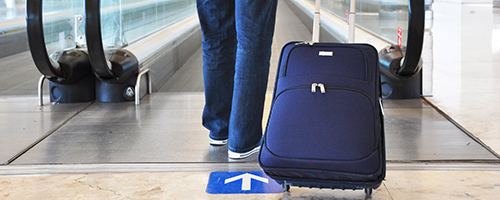
Services and information
Travel and identification documents for entering canada.
Acceptable documents, establishing your personal identity, your citizenship and other important information
Find out if you can enter Canada
Visas, Electronic Travel Authorizations and other documentation you may need to enter or transit through Canada
Visas, Electronic Travel Authorizations and other documentation you may need to enter or transit through Canada.
Information on what you can bring back to Canada, what to declare, duties and taxes, and personal exemptions
Airport arrival kiosks and eGates
Verify your identity and make a customs declaration at Canada’s major international airports
Directory of CBSA border offices and services across Canada
List of designated CBSA offices and service locations across Canada
Examining digital devices at the Canadian border
Your cell phones, tablets, laptops and any other digital device you are carrying can be examined when you when cross the border
Reporting requirements for private boaters
Options, exceptions, consequences for failing to report and more.
Reporting requirements for non-commercial aircraft
Landing private, company-owned or charter aircraft in Canada
Advance Declaration: Save time at the border
Use Advance Declaration in ArriveCAN to submit your customs and immigration declaration before flying into Canada

Snowbird Advisor
Popular topics, featured snowbird resources.

Travel Insurance
The travel insurance specialists for snowbirds...

Phone Plans
Get exclusive members-only pricing on Canada - U.S. roaming plans...

Currency Exchange
Snowbirds, save on foreign exchange rates...

Vehicle Transport
Have your vehicle shipped between Canada and the U.S.

Virtual Pharmacy
Free prescription medication delivery + virtual doctor visits...

Member Benefits
Gets exclusive discounts, services and resources for snowbirds...

Destination Guides
Get the inside scoop on select snowbird destinations...

Credit Card
No foreign transaction fee credit card for snowbirds...

Travel Services
Get exclusive travel offers and discounts...
MEMBER BENEFITS & RESOURCES FOR SNOWBIRDS

Exclusive 5% discount for Snowbird Advisor members!
Snowbird Guide to Bringing Your Pets to the U.S. and Beyond for the Winter
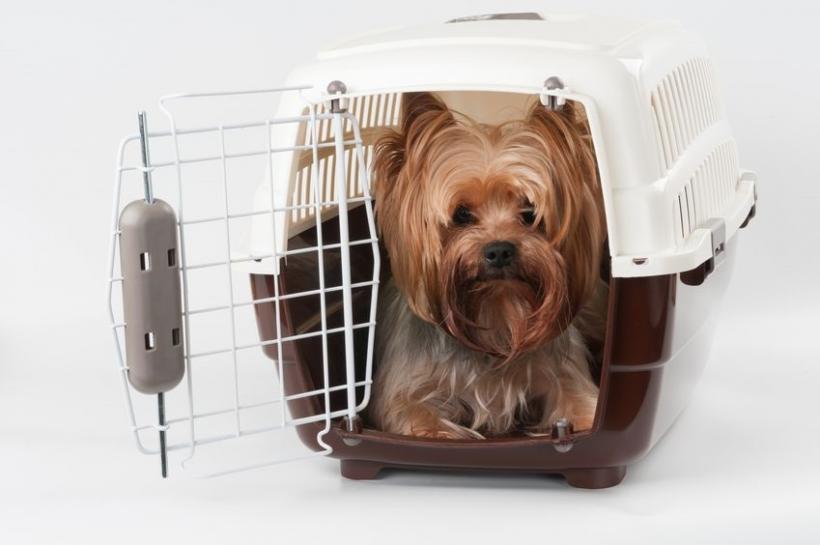
LAST UPDATED: December 7, 2022
Most Canadian snowbirds who own cats or dogs will of course want to bring them along when they go away for the winter each year. Whether you are travelling by air or by car, the rules for bringing a pet are essentially the same, but what’s involved is vastly different and requires a lot of planning and organization.
Read on for tips and guidelines to help you prepare for either mode of transport.
Requirements to bring your pets to the U.S.
First of all, your pet must be healthy, look healthy and be well groomed or it can be turned away.
It is required that all dogs are up to date with rabies shots and other vaccinations and you should carry a document from your veterinarian certifying general good health and vaccination records. Although cats are not technically required to have rabies shots, many border guards will ask for proof. Vaccination records are also required for coming back to Canada.
Before you travel, be sure to look at the websites of the departments that oversee the importation of pets (even though you are not importing your pet, you are subject to the same health requirements).
In the United States, this is the U.S. Department of Agriculture (USDA). You can find regulations for importing pets on the USDA website . The Centre for Disease Control (CDC) website also has requirements for importing pets, including rabies vaccinations .
Additionally, some States have their own requirements for bringing in pets, in particular, Hawaii, which imposes a quarantine period.
It is also highly recommended that your pet be micro-chipped for identification purposes should he or she escape during travel or during your stay in the United States.
Cats are required to be removed from their cat carrier and this can be problematic. Make sure you have gloves and the right clothing to deal with this.
Start well before your travel date to thoroughly investigate the requirements for your pet to travel.
Bringing your pets to countries other than the U.S. for the winter
Canadians who winter in countries other than the United States may still wish to bring their pets with them.
You can find information on the requirements for bringing pets from Canada to Mexico here on the Government of Canada website.
Other Countries
If you are travelling to other countries, be sure to research the pet importation requirements for your destination before you go, as each country has its own regulations regarding bringing in cats and dogs - and in some cases, it may not even be permitted.
Requirements to bring your pets back to Canada
It’s important to remember that you will be subject to inspection upon returning to Canada if you are bringing in a pet.
The Canadian government agency that oversees the importation of animals is the Canadian Food Inspection Agency (CFIA). You can find rules and regulations about importing a pet to Canada on the CFIA website as well as information on travelling with pets on the Government of Canada website .
If you have purchased your pet while in the U.S. or another country, different rules may apply so be sure to investigate the rules for importing an animal.
Tips for travelling by air
Travelling by air is in many ways a simpler option than by car. However, it is extremely important to check with each airline as their policies for carrying pets varies. This might influence your choice of airline, as some are more pet friendly than others.
Before planning your trip, be sure to investigate the feasibility of transporting your pet on the dates you would like to travel.
Larger pets have to be carried in the cargo hold area of the aircraft and in approved animal crates. However, most airlines have blackout periods when they will not carry any pets whatsoever in the hold and this usually includes much of the summer months.
In addition, since the COVID-19 pandemic, some airlines are restricting pets in the hold due to the likelihood of flight delays, etc.
If your pet is small enough, it may be allowed in the passenger cabin but must be kept under the seat, not all airlines allow this, and it can even vary by time of year. So be sure to ask all the right questions before you book your flights.
When you do book your flights, you must advise the airline at the same time that you will be travelling with a pet.
Airlines have strict rules about the type of carrier your pet can travel in, so be sure to ask about that too and make sure you have one that complies. The carrier should be large enough for your pet to comfortably lie down and have adequate padding for comfort. There are specific rules for carriers that are allowed in the cabin, so again, be sure to ask.
Many vets advise a mild tranquillizer for your pet before air travel. There are sprays for the carrier that relieve anxiety. Be sure to ask your vet about this and any other tips he or she may have.
Travelling by car
Before you go: Travelling by car with your pet requires significant preparation and planning. First of all, you will want to source hotels or motels along your route that allow pets. You can find this out by checking the websites of the many chains that operate throughout the U.S. Make reservations well in advance so your pet is not in the car any longer than necessary when you arrive. Many hotels do apply a surcharge. You can put the litter box on some newspapers next to the hotel toilet.
Make sure you have sufficient food and treats for your pet’s journey and also check that you can import the food and treats you normally use. If you don't do this, you will have to stop once in the U.S. and purchase food there. Carry plenty of water and bowls for food and water. And be sure to take any medications your pet needs.
Make sure you have a crate or carrier for the journey. It is wise to line the carrier with a number of puppy training pads, in case of any accidents or car sickness. Other useful items are paper towels, rubber gloves, leashes, trash bags, plastic spoons for tinned food, and rug cleaner for the car or hotel room. For cats, you will want a litter box for the hotel and litter tools.
En route: In the car, it is better if your pet remains restrained in a carrier or cage, this is for your safety and theirs. If you do open the carrier, do it with the car doors closed, as you don’t want to risk your pet escaping outside the car.
Travelling through the southern U.S. even in the winter can still be very hot and if you are driving alone any rest stops should be kept to a minimum so your pet is not left in a hot car. Dogs can be taken out of the car on a leash for bathroom breaks and to eat and drink, however, cats are best kept in the car and fed and watered there, to prevent any chance of escape.
Choose the fastest and most direct route using interstate highways. This is not the time to take scenic, mountain routes. Many pets get carsick, especially on high and winding roads. The best thing for your pet is to get to your destination as soon as possible.
Disclaimer: The material provided on the SnowbirdAdvisor.ca website is for informational purposes only and does NOT constitute legal, tax, accounting, financial, real estate, medical or other advice, and should not be relied on as such. If you require such advice, you should retain a qualified professional to advise you.
Snowbird Services & Resources
The travel insurance specialists for snowbirds, boomers and seniors. Get the right coverage at the right price...
Free prescription medication delivery + virtual doctor visits and more...
Save on currency exchange with preferred rates from Snowbird Advisor...
Have your car shipped between Canada and the U.S. for the winter...
modal-shelf#titleToggle"> Get a Free Membership
Snowbird Advisor members receive exclusive snowbird tips, tools, offers, services and more!
We respect your privacy and will never share your personal information. View our Privacy Policy. Cross Border Media Inc. | 430 - 245 Eglinton Avenue East, Toronto, ON M4P 3B7

We keep your e-mail safe. You can unsubscribe at any time. Privacy policy.

IMAGES
COMMENTS
If you are travelling with a pet or planning to import an animal to Canada, you will need the right paperwork at the border to meet Canada's import requirements. If you don't, you risk experiencing delays at the border and your animal may not be allowed into Canada. Canada has specific import requirements in place to avoid introducing animal ...
Shipments of 1-2 dogs less than 8 months of age which travel unaccompanied are required to be examined and have a health certificate issued by a licensed veterinarian within 72 hours of arrival in Canada. The full travel requirements are described in the provided health certificate*. This certificate does not need to be endorsed by APHIS.
Consult a veterinarian. Talk to your veterinarian to consider the risks of travelling and confirm that your dog is healthy and has all the required tests, vaccinations and treatments to enter Canada. Ensure that all of your dog's records are ready and up to date, and that the required documentation is completed. 3. Prepare for travel by air.
When driving from Canada to the United States, you can bring up to 50 pounds of pet food purchased in Canada. The food must meet the following requirements: Does not contain lamb, sheep, or goat meat. Shelf-stable (not needing refrigeration) and sealed (never opened) containers of pet food must in commercial packaging.
As soon as you know your travel details, contact your local veterinarian to assist with the pet travel process. Requirements could include obtaining a health certificate, updating vaccinations, testing, or administering medications. Only dogs, cats and ferrets qualify as pets by CFIA. Check requirements for other animals if you're travelling ...
Before you leave Canada, contact the embassy of your destination country about its requirements for importing animals. The Canadian International Health Certificate may be used to accompany pet dogs and cats to other countries. This certificate must be printed on legal paper (8.5" X 14"). No other format will be accepted. If your destination ...
When traveling to Canada from the U.S. you are allowed to bring up to 20 kg of dog food, and treats with you, but only if you meet all of the following requirements below. The dog food must be of United States origin and be commercially packaged. The dog food must be in the possession of the traveller at the time of entry from the U.S.
Dogs over 8 months of age and cats over 3 months of age entering Canada from countries Canada considers as rabies free*. Your dog or cat will need either proof of current rabies vaccination (EU Pet Passport is accepted) OR a health certificate in English or French and completed by a licensed veterinarian in the origination country.
Remove your pet from its carrying case and send the carrying case through the screening equipment. Hold your pet in your arms and proceed through the metal detector. Take your pet out of its cage or carrier if it is being transported in the belly hold of the aircraft. A screening officer will screen the cage or carrier separately.
Depending on your dog's age and where you are traveling from, the requirements for a taking a dog to Canada (Canadian Pet Passport) can be any of the following: Rabies vaccination. Health certificate. Additional vaccinations - e.g. distemper, parainfluenza, leptospirosis, parvovirus, bordetella, hepatitis. Import permit.
Dogs entering Canada without a rabies vaccination certificate will be required to undergo a rabies vaccination at the owner's expense within two weeks of arrival. Costs associated with the service include: $30 + tax for the first animal. $5 + tax for any additional animals.
Complete the following entry requirements to travel to Canada with your pet: Provide a valid rabies vaccination certificate written in English or French issued and signed by a licensed veterinarian that identifies the animal's age, breed, sex, color/markings, weight, microchip/tattoo number and date of vaccination with the serial number. This ...
Canadian commercial dogs returning to Canada; For the most up to date requirements for bringing your dog(s) into Canada, please refer to the CFIA's Automated Import Reference System (AIRS). It is strongly recommended to always travel with the physical original copy of all required documents when bringing your dog(s) into Canada.
All dogs over 8 months old and cats or ferrets over 3 months old will require rabies vaccinations. When taking a pet to Canada, you will need to show proof of a current rabies vaccination. Canada accepts both 1-year rabies vaccinations, and 3-year vaccinations. Canada accepts EU Pet Passports.
If you're thinking of buying or adopting a dog. Find out what to watch out for if you are importing a dog you have never met or buying from an on-line broker in Canada. Date modified: 2023-03-17. Rules for bringing a dog or other pet on a trip, or bringing home food or plants bought outside of Canada.
Note: For details on pet imports, including on international flights, contact the Canadian Food Inspection Agency (CFIA); phone (800) 442-2342 or visit the Web site at www.inspection.gc.ca. If you need assistance while in Canada, contact the Embassy of the United States of America, 490 Sussex Dr., Ottawa, ON, Canada K1N 1G8; phone (613) 688-5335.
Getting a Canadian Pet Passport to enter Canada is easy and will just take 2 simple steps: Research - entry requirements can vary depending on your pet's species, age and breed. There are different entry regulations for different pet species. Additionally, certain breeds of dog are banned from entering some provinces in Canada.
Pets travelling via Air Canada Cargo. When your pet has to travel alone, for a variety of animals, including cats and dogs. Air Canada Cargo ships a wide variety of animals, from cats and dogs to hatching eggs, insects and tropical fish. You can be sure that your pet will travel safely and comfortably to its destination.
4. Drive by car. Driving by car with your dog from the USA to Canada is one of the most popular methods of travel. It is possibly the most convenient method for you and your dog because your pup can sit comfortably in the passenger seat or in the back seat. This, of course, avoids any potentially dangerous complications associated with having ...
Use Advance Declaration in ArriveCAN to submit your customs and immigration declaration before flying into Canada. Government of Canada's official one-stop-shop for comprehensive international travel information.
Additional Paperwork. Dogs traveling into Canada with their owners need only a rabies certificate, but dogs flying in cargo or without their owners also need a veterinary health certificate. The ...
APHIS Pet Travel. The CDC's temporary suspension for dogs entering the United States from high-risk countries for dog rabies implemented in July 2021 will be extended through July 31, 2024; all current requirements will remain in place. Learn more on CDC.gov. All questions pertaining to CDC requirements should be directed to CDCanimalimports ...
The carrier should be large enough for your pet to comfortably lie down and have adequate padding for comfort. There are specific rules for carriers that are allowed in the cabin, so again, be sure to ask. Many vets advise a mild tranquillizer for your pet before air travel. There are sprays for the carrier that relieve anxiety.